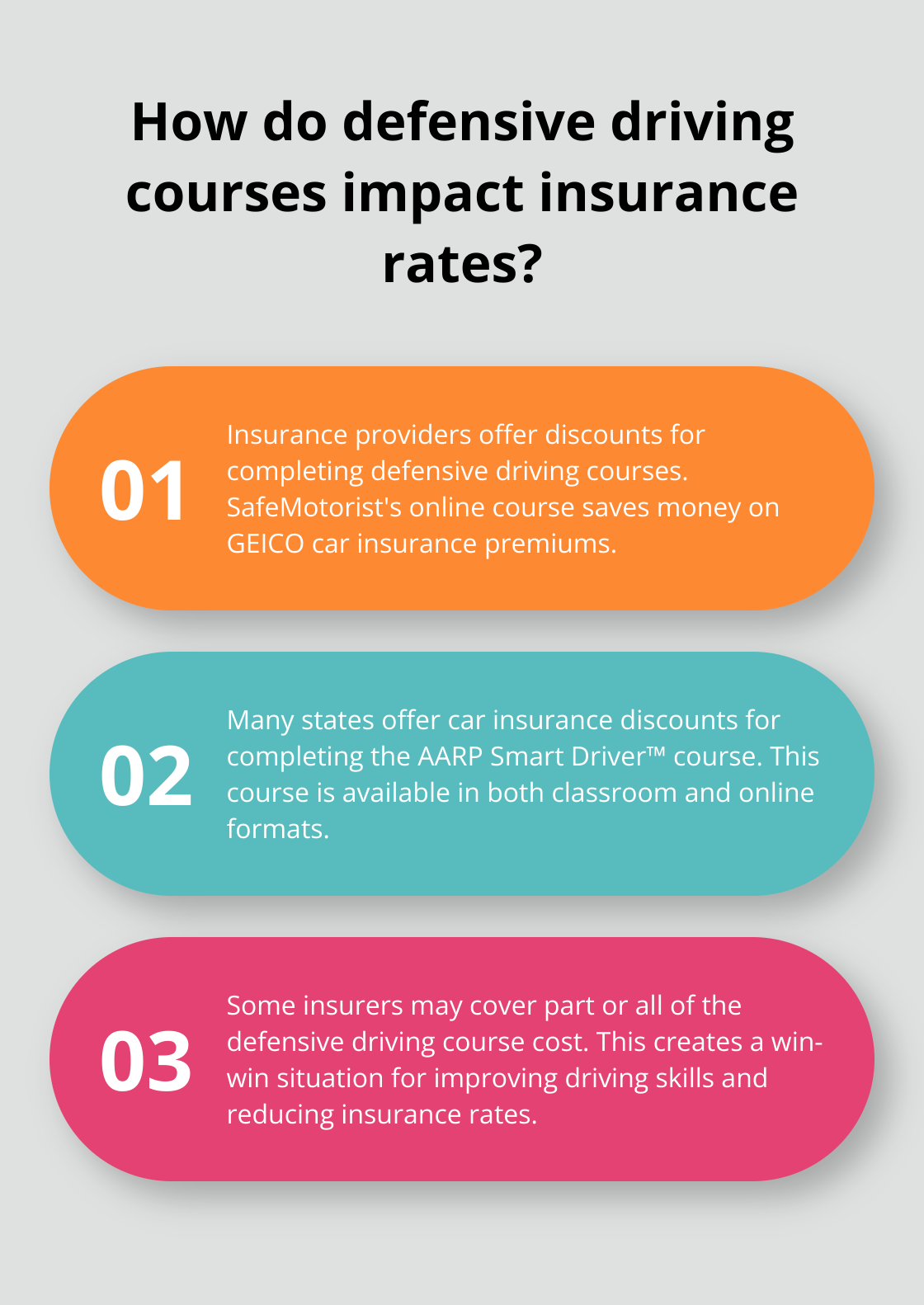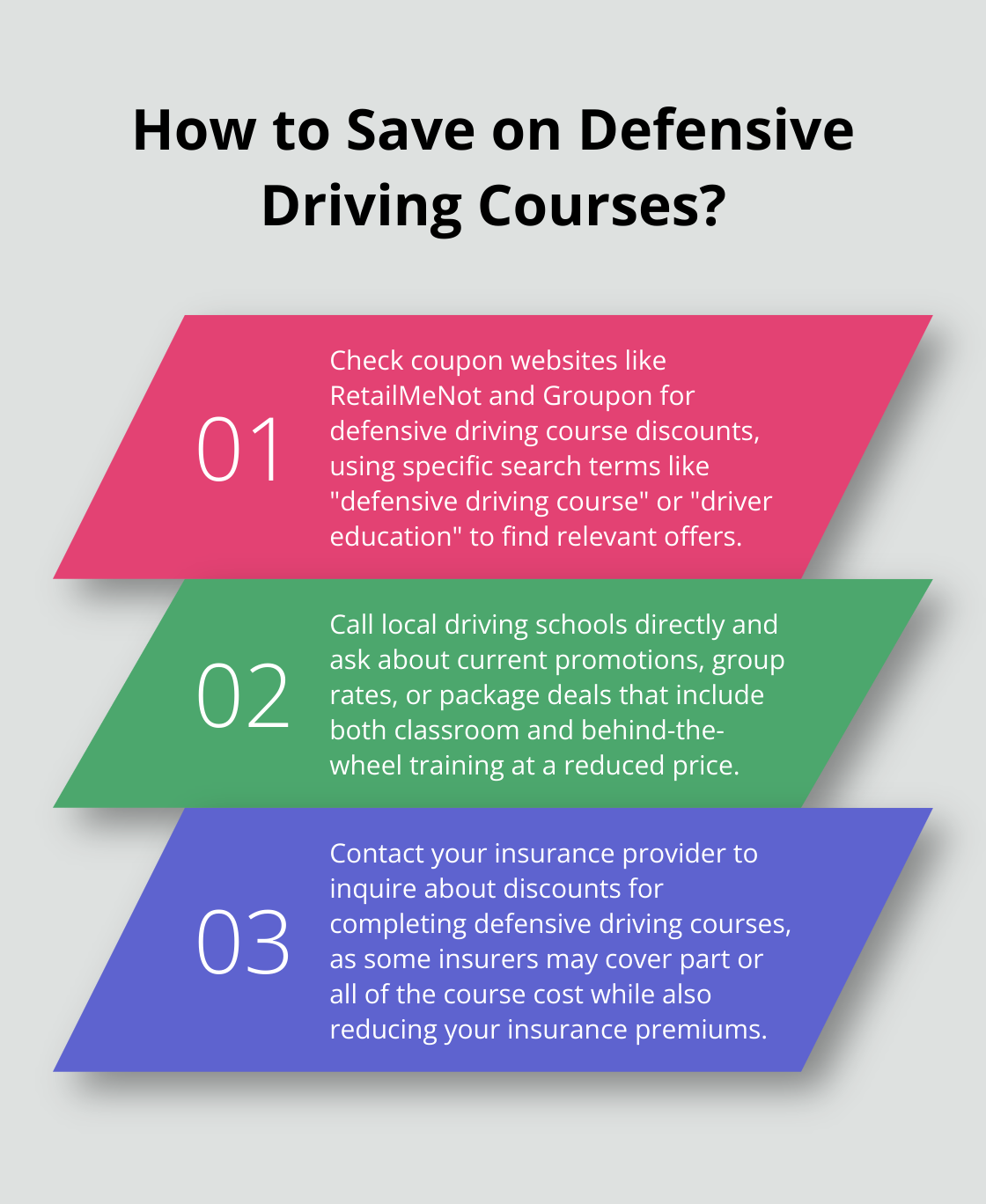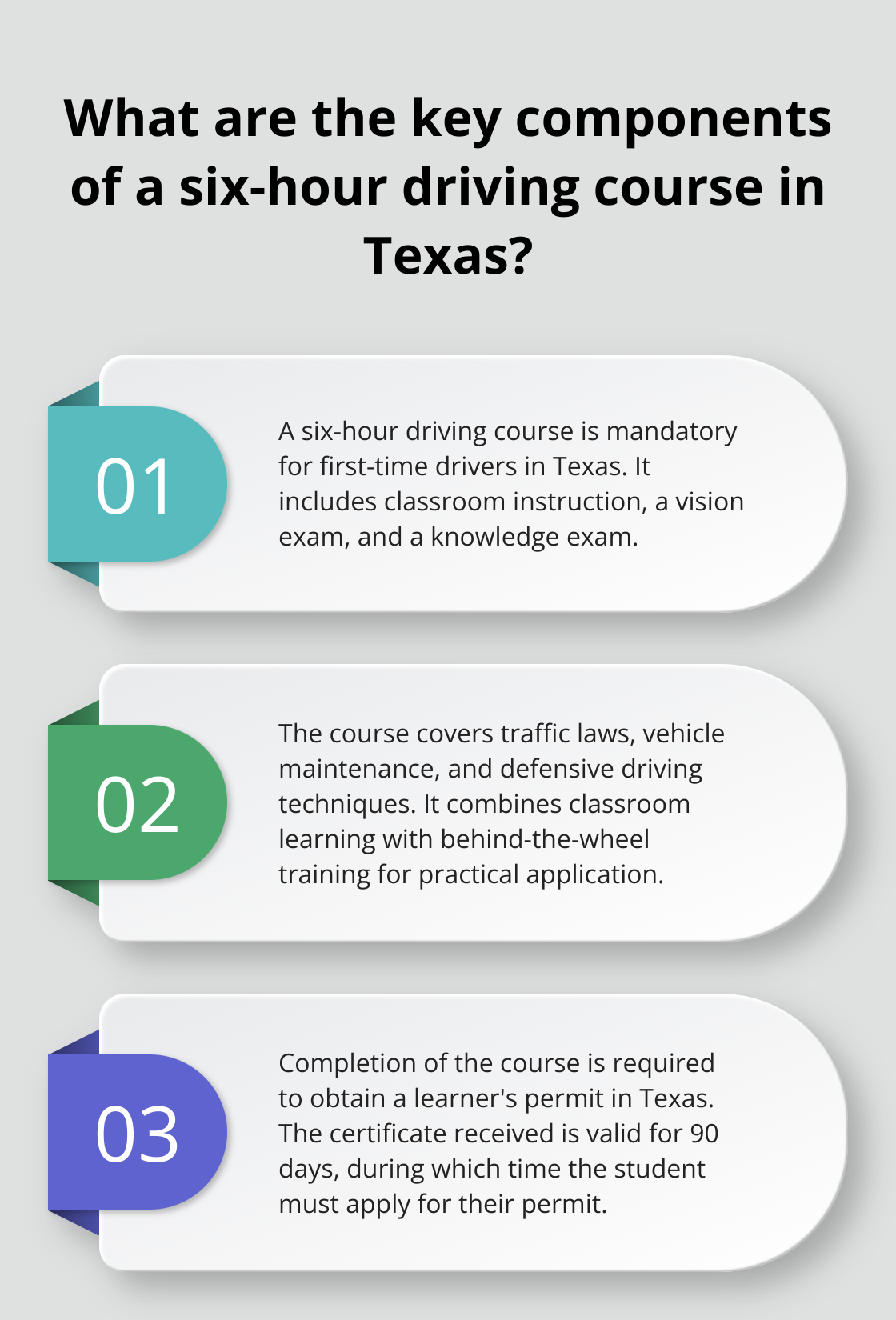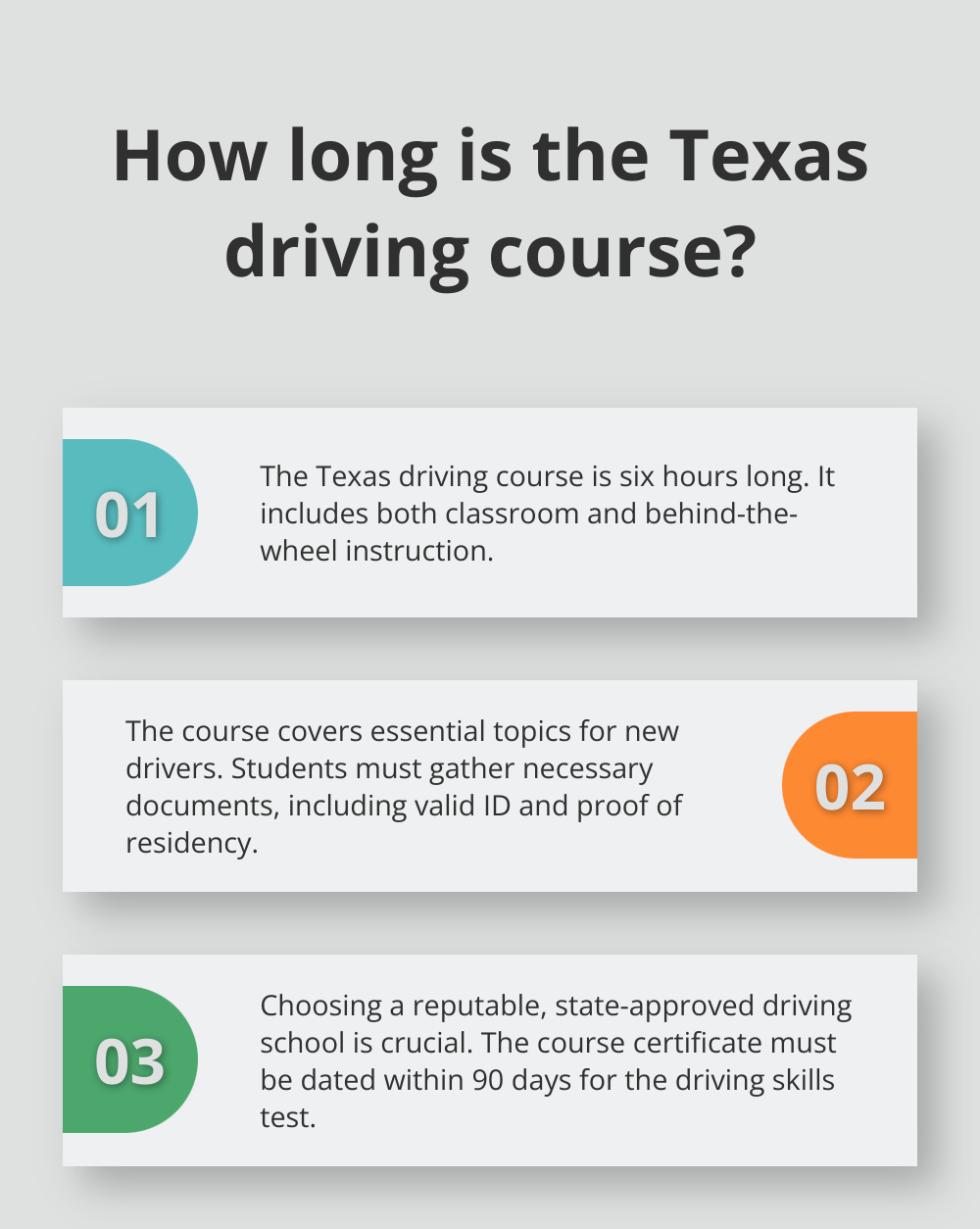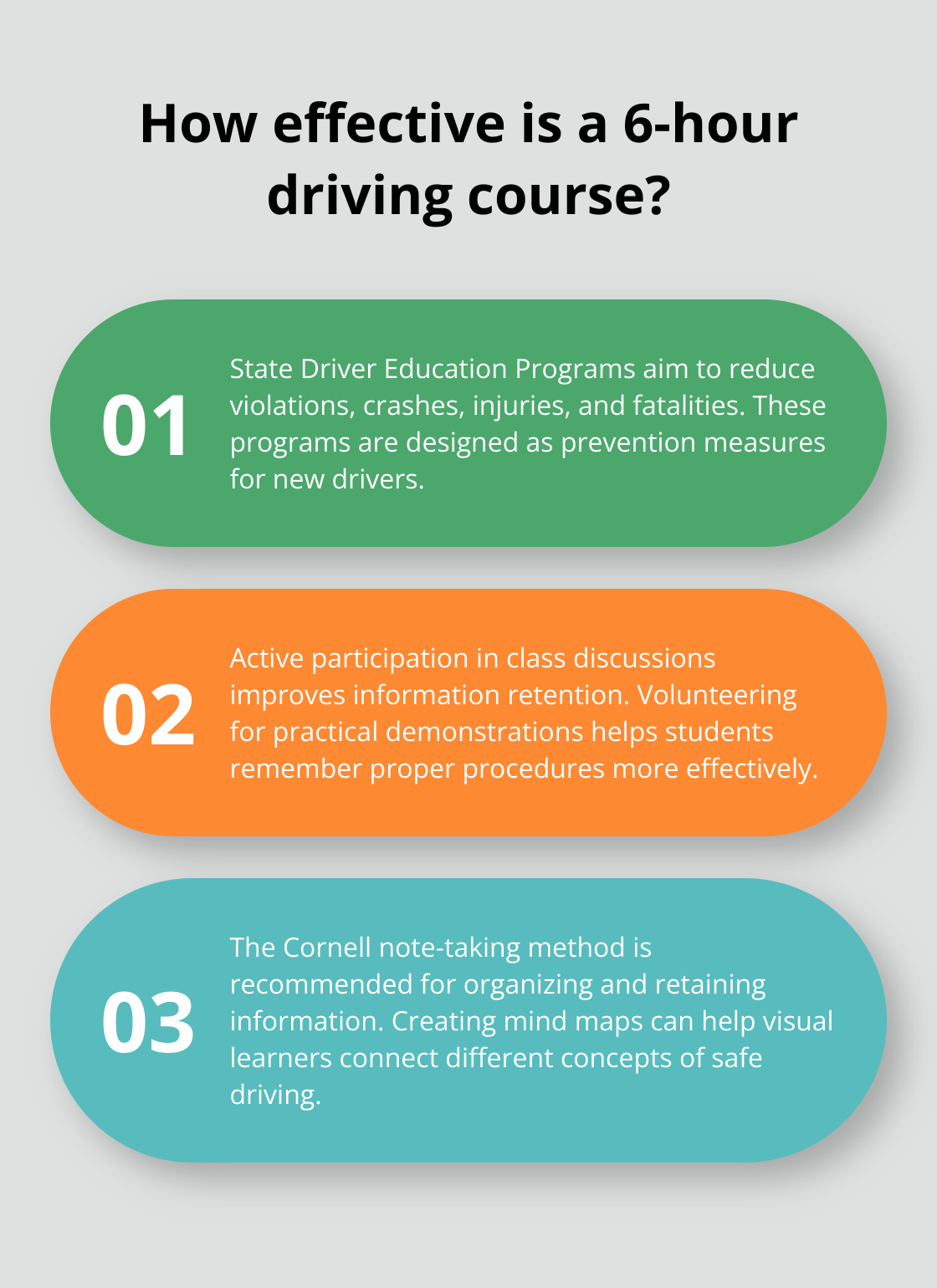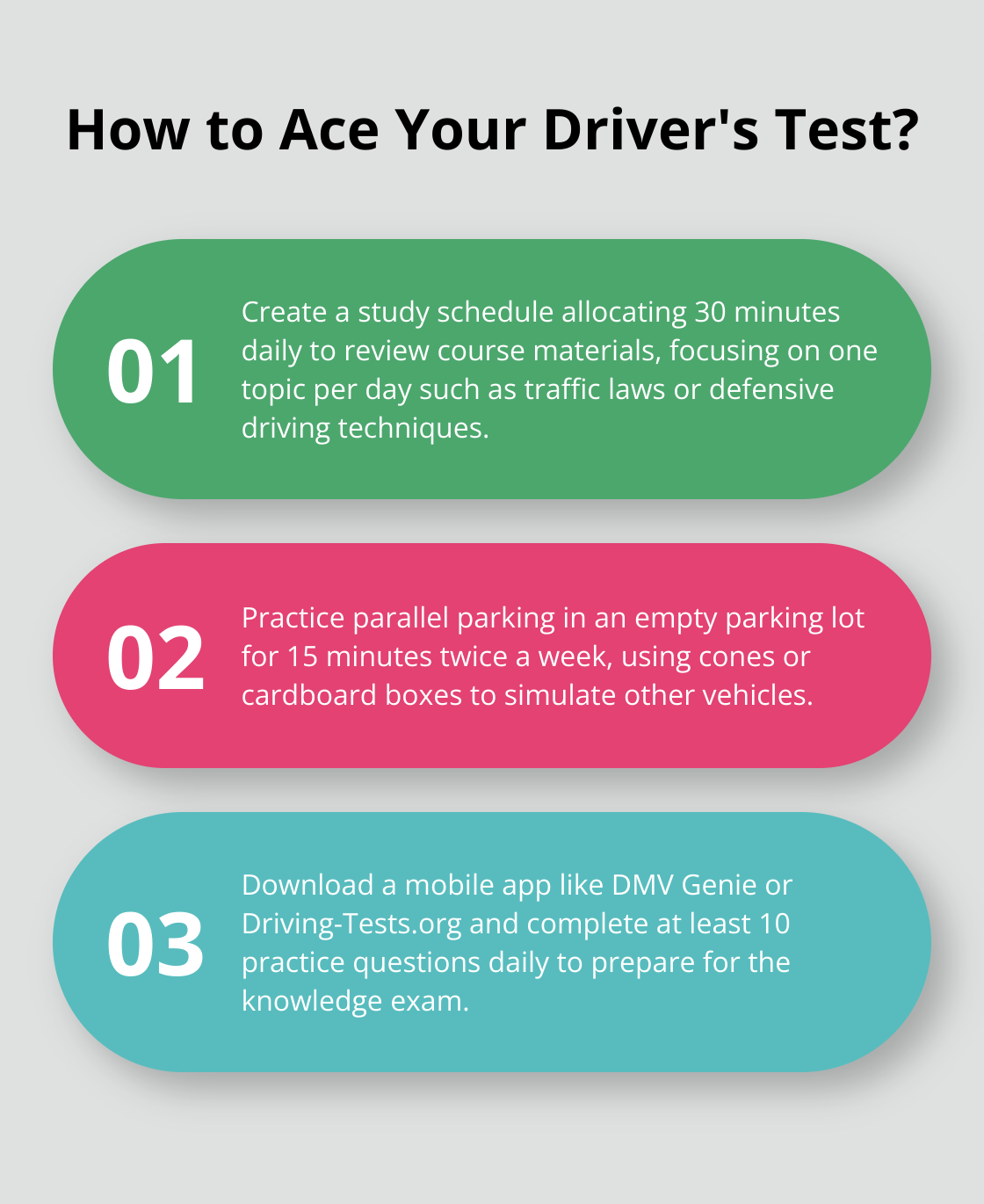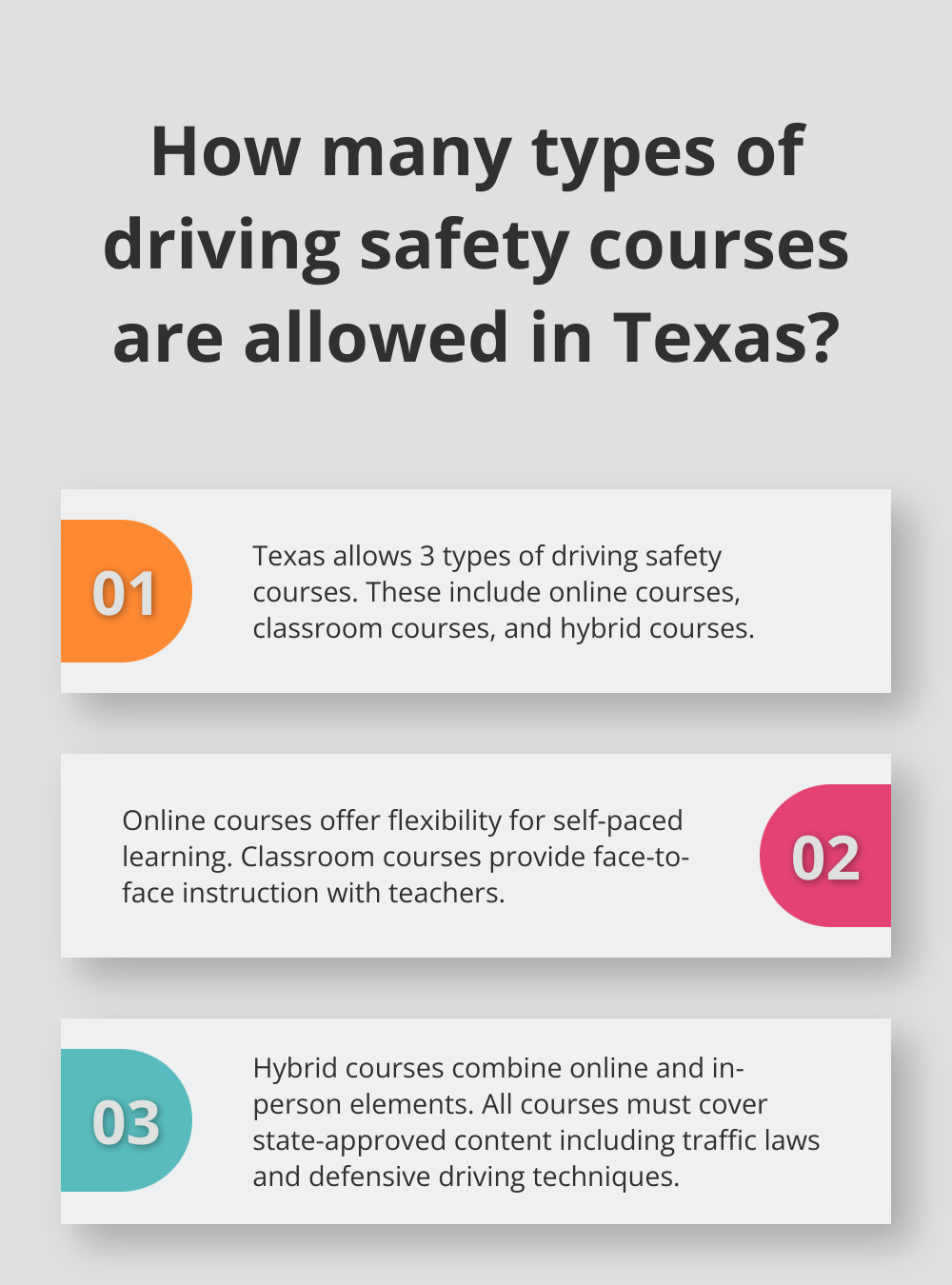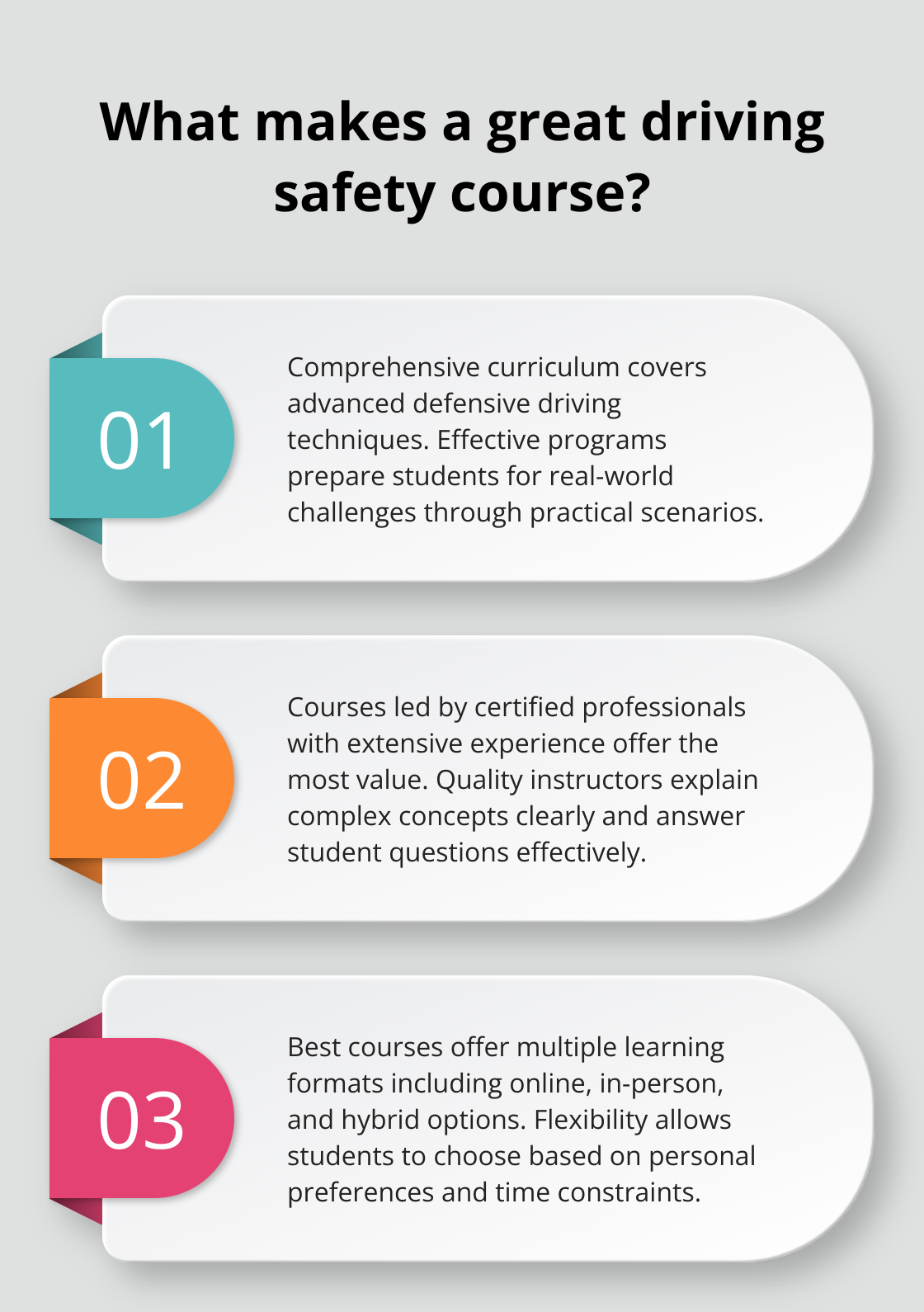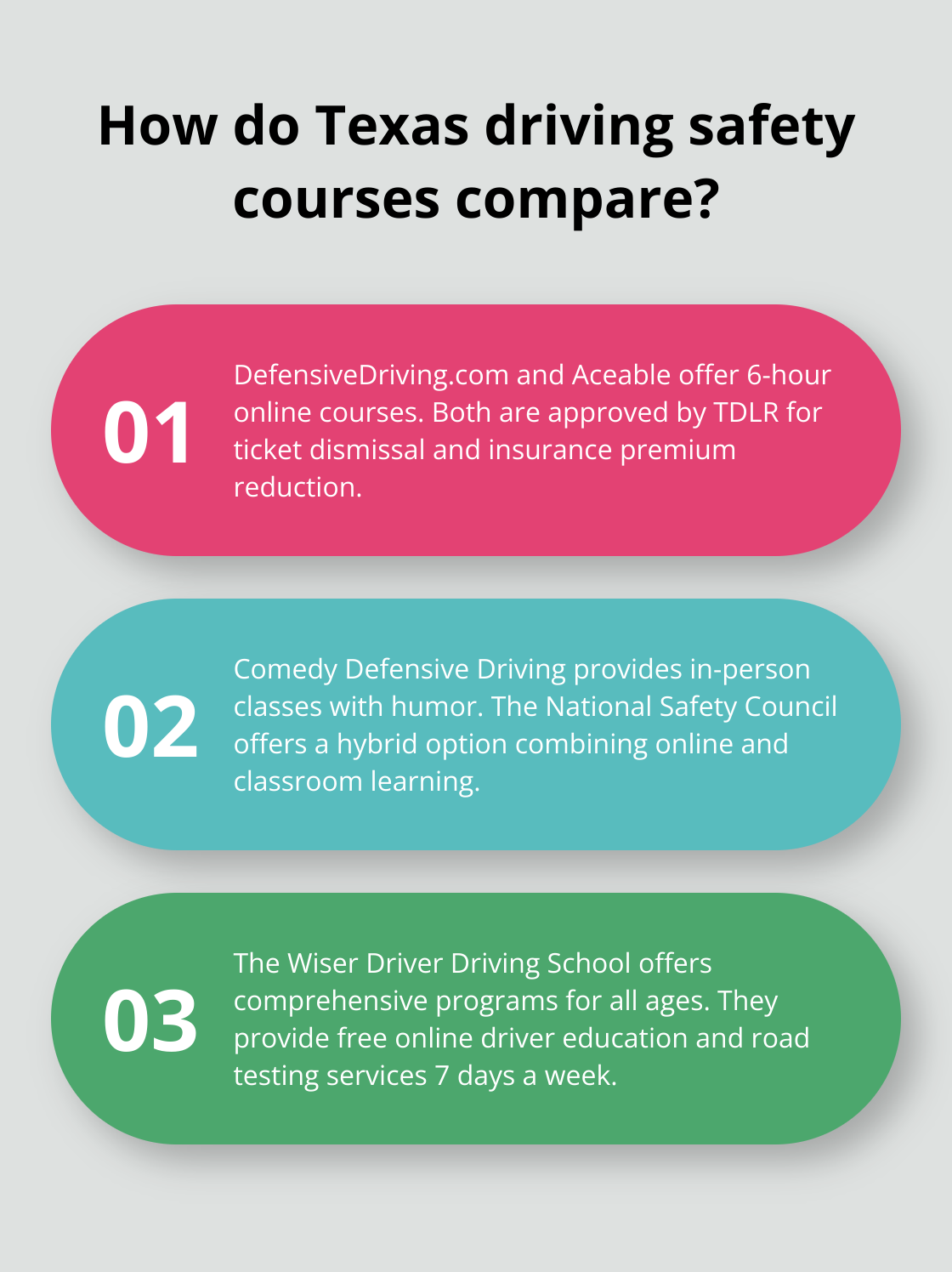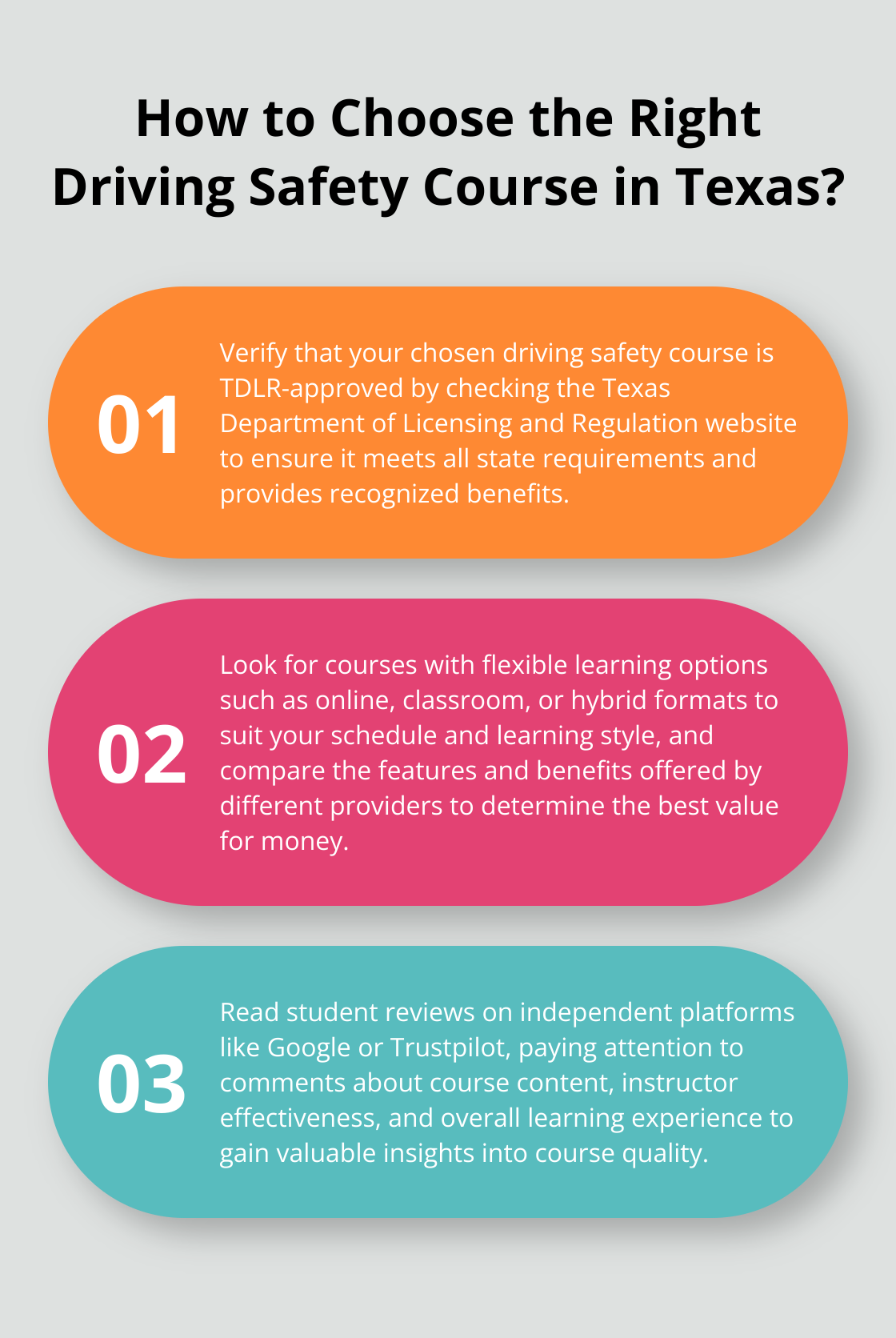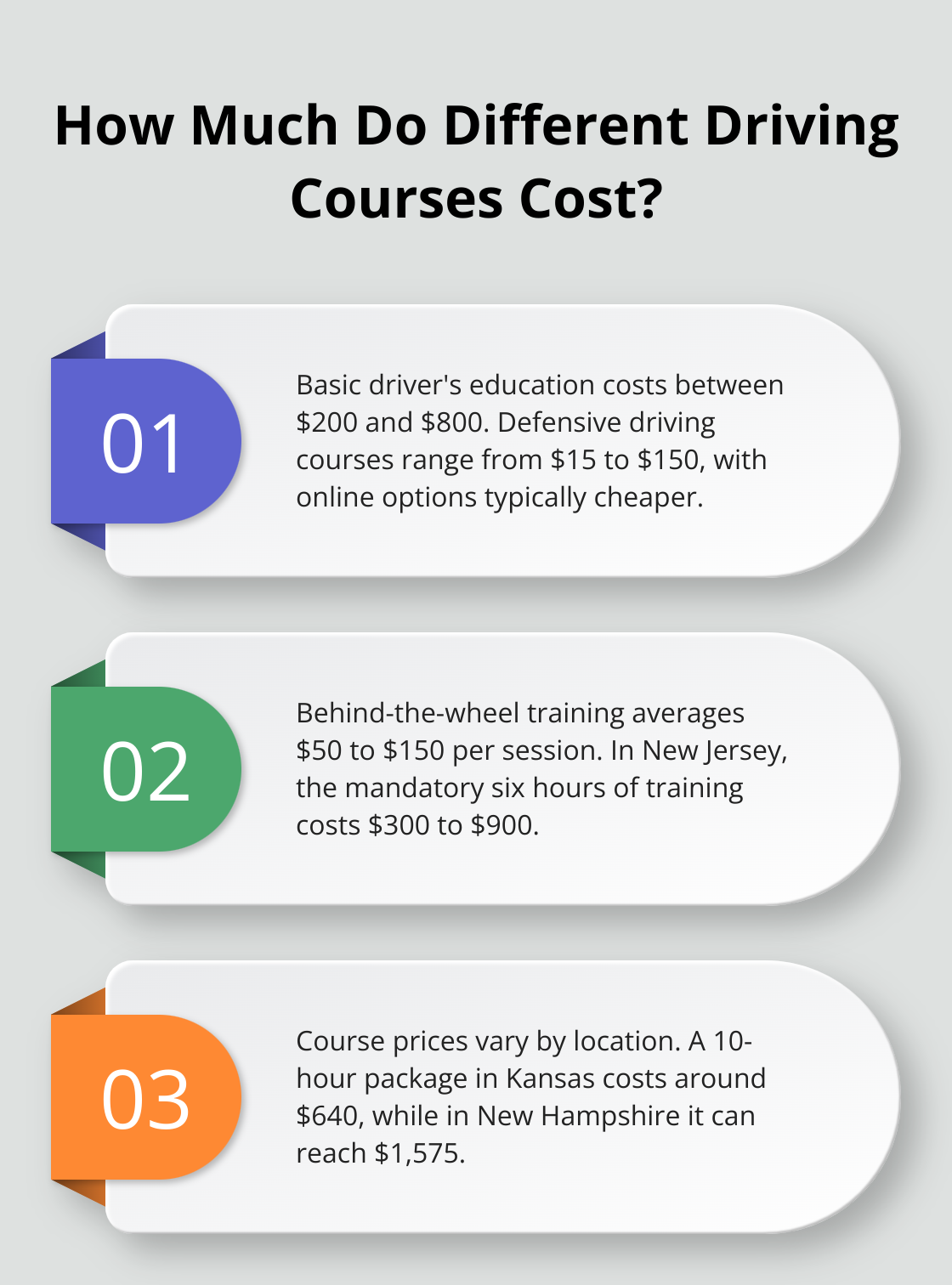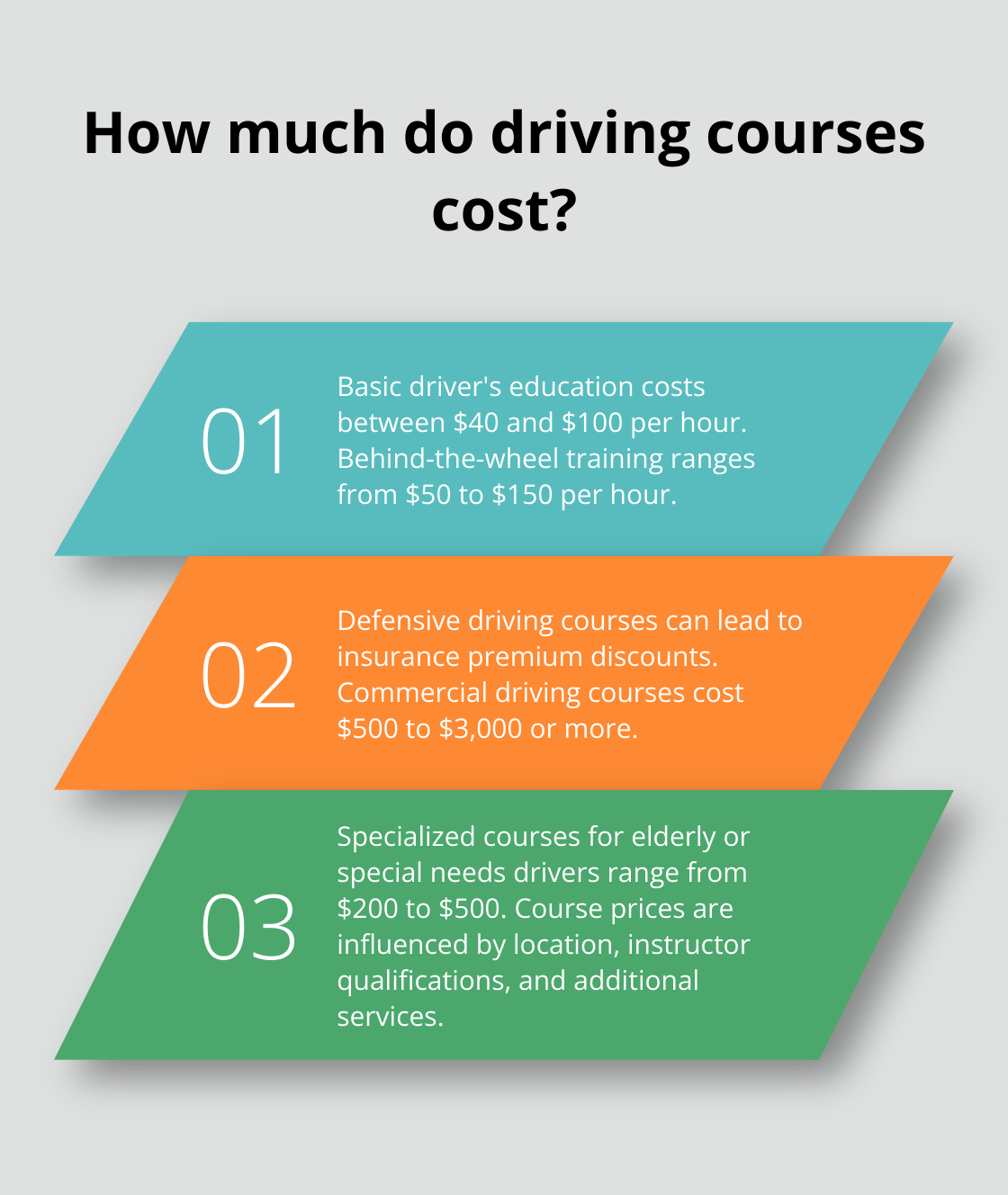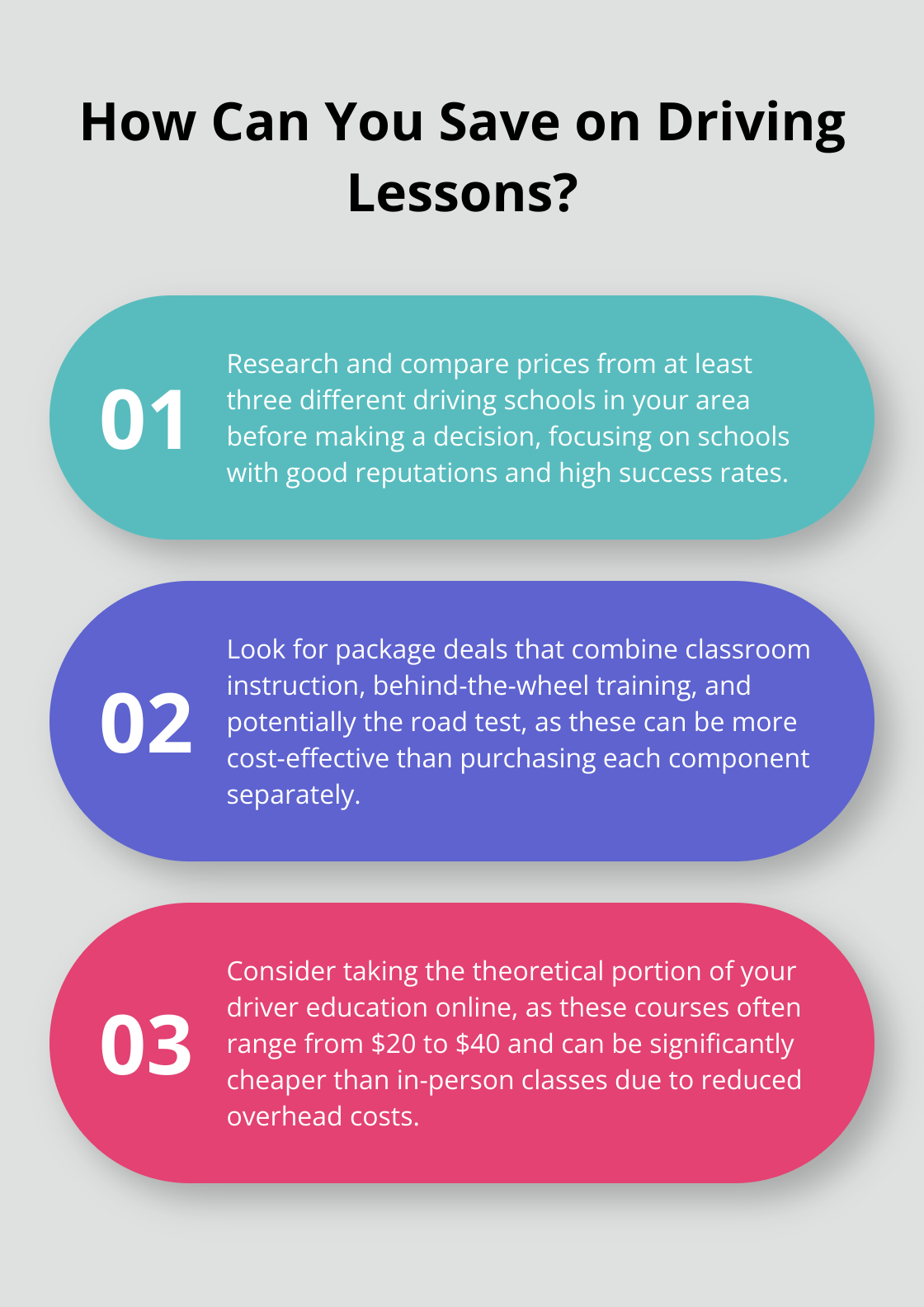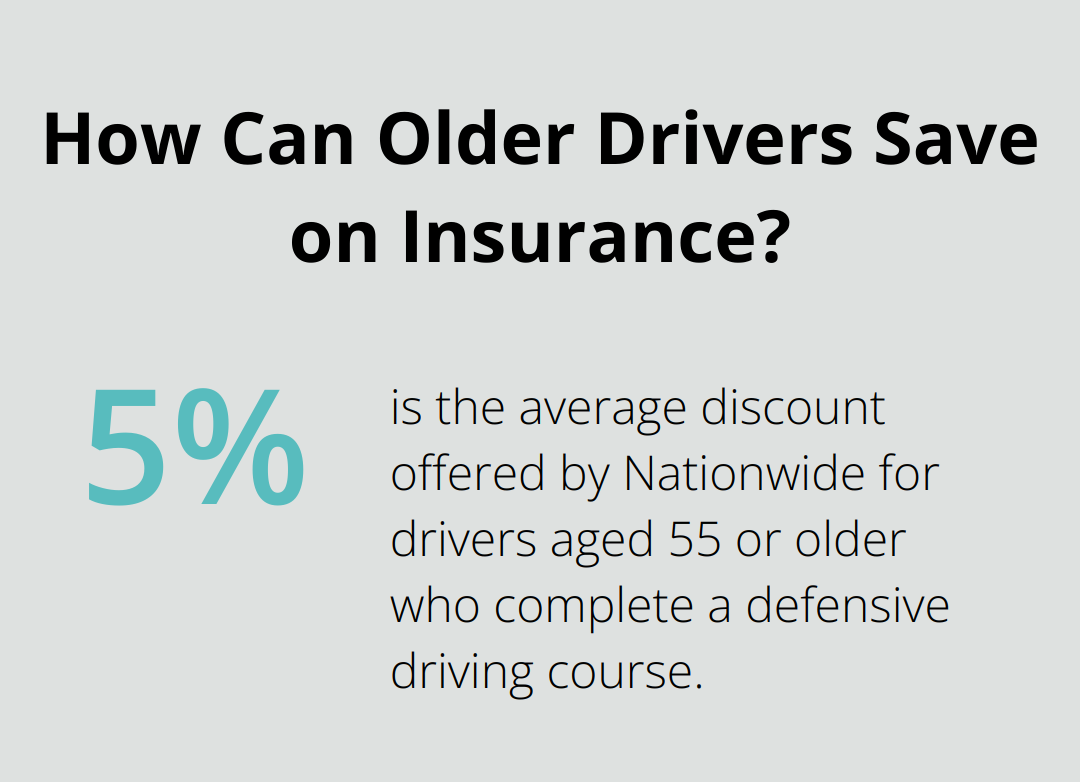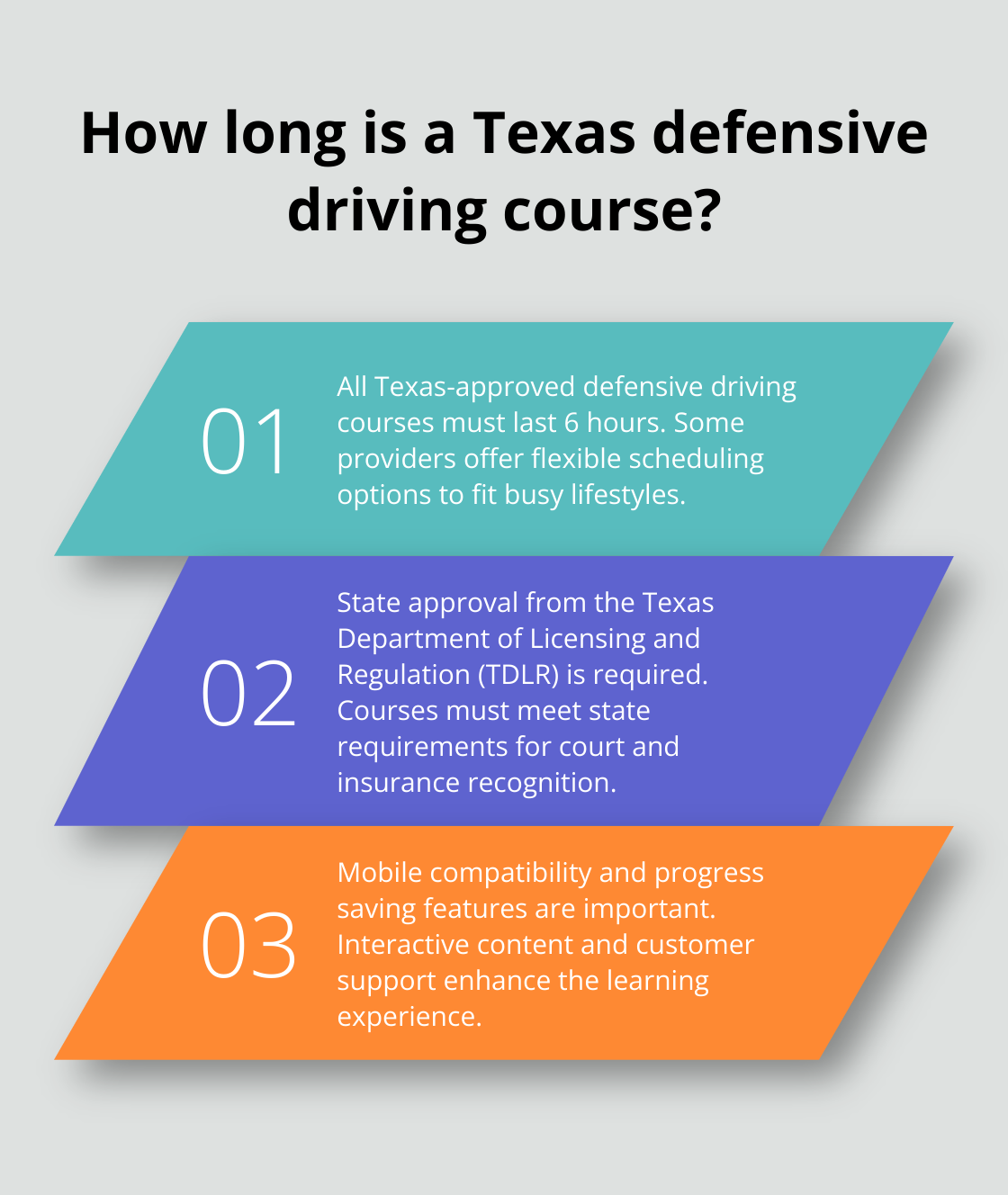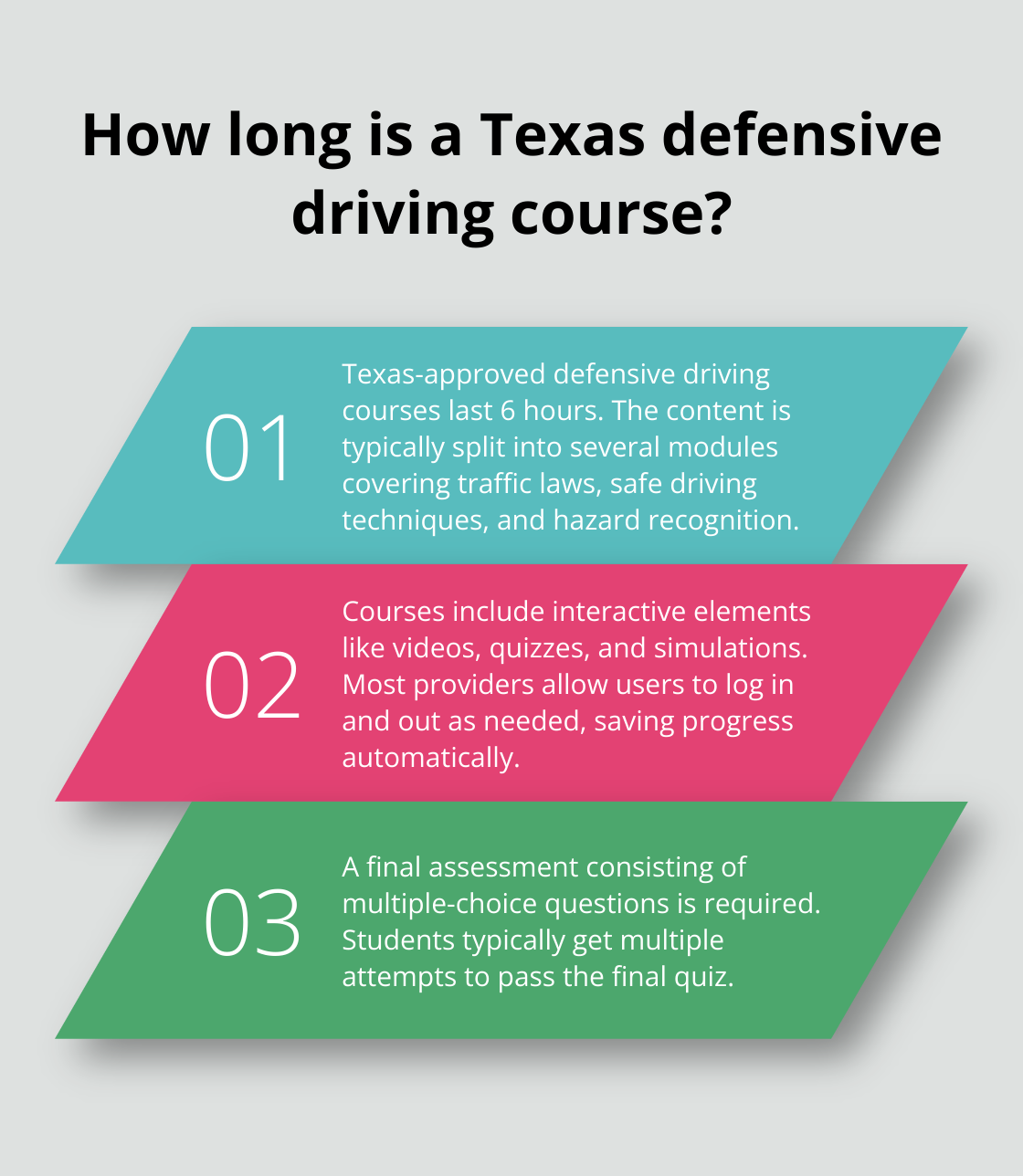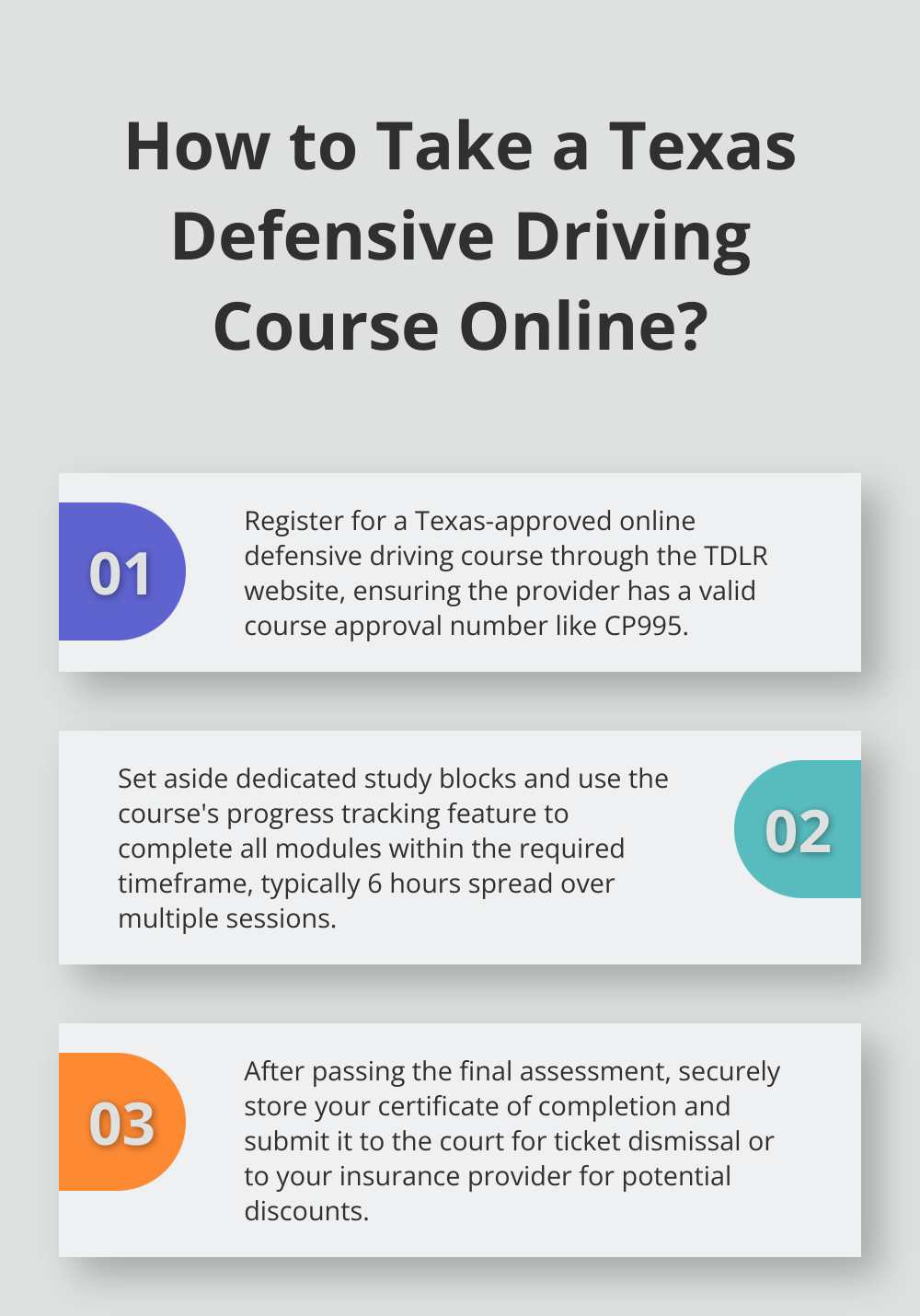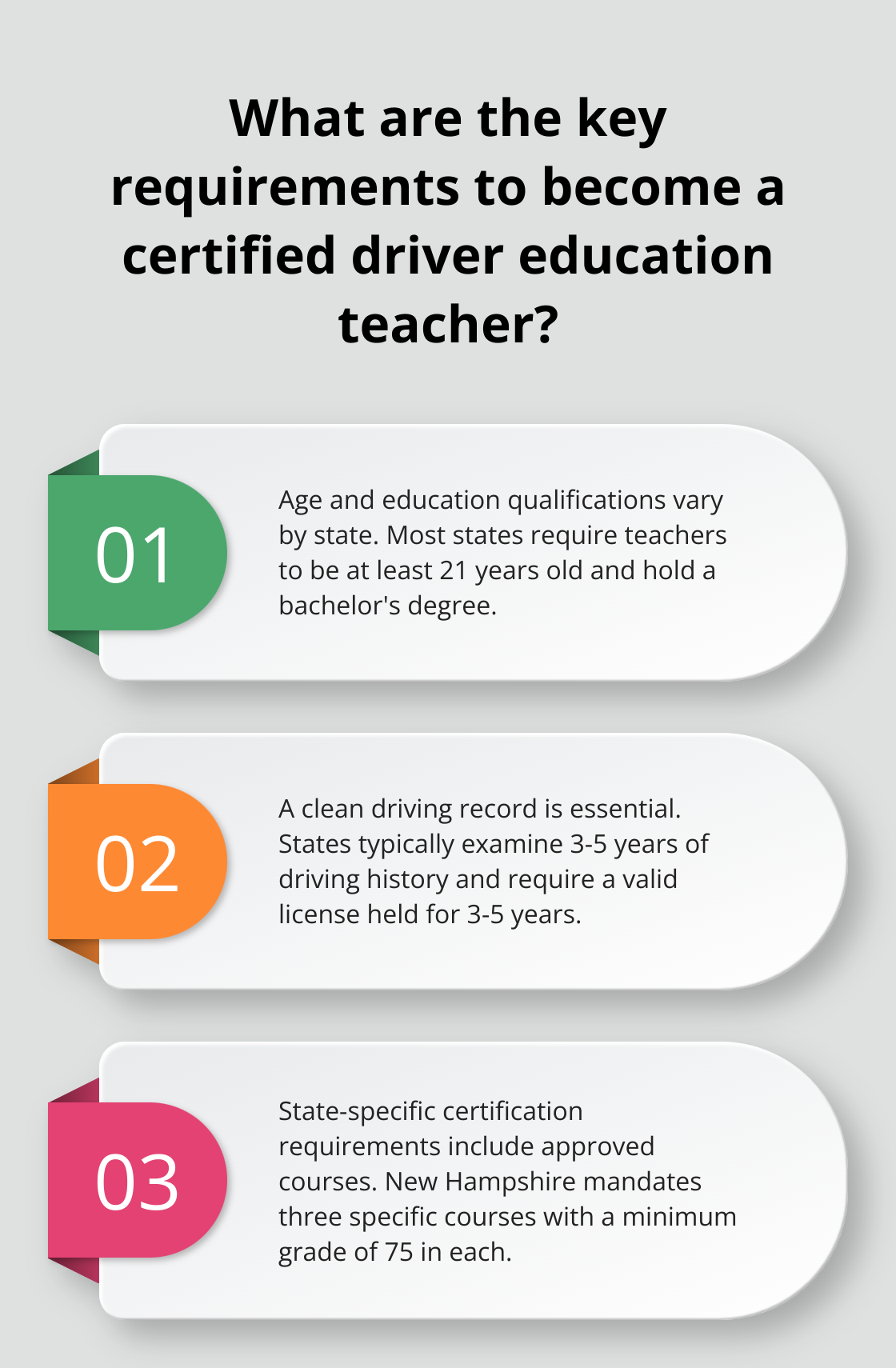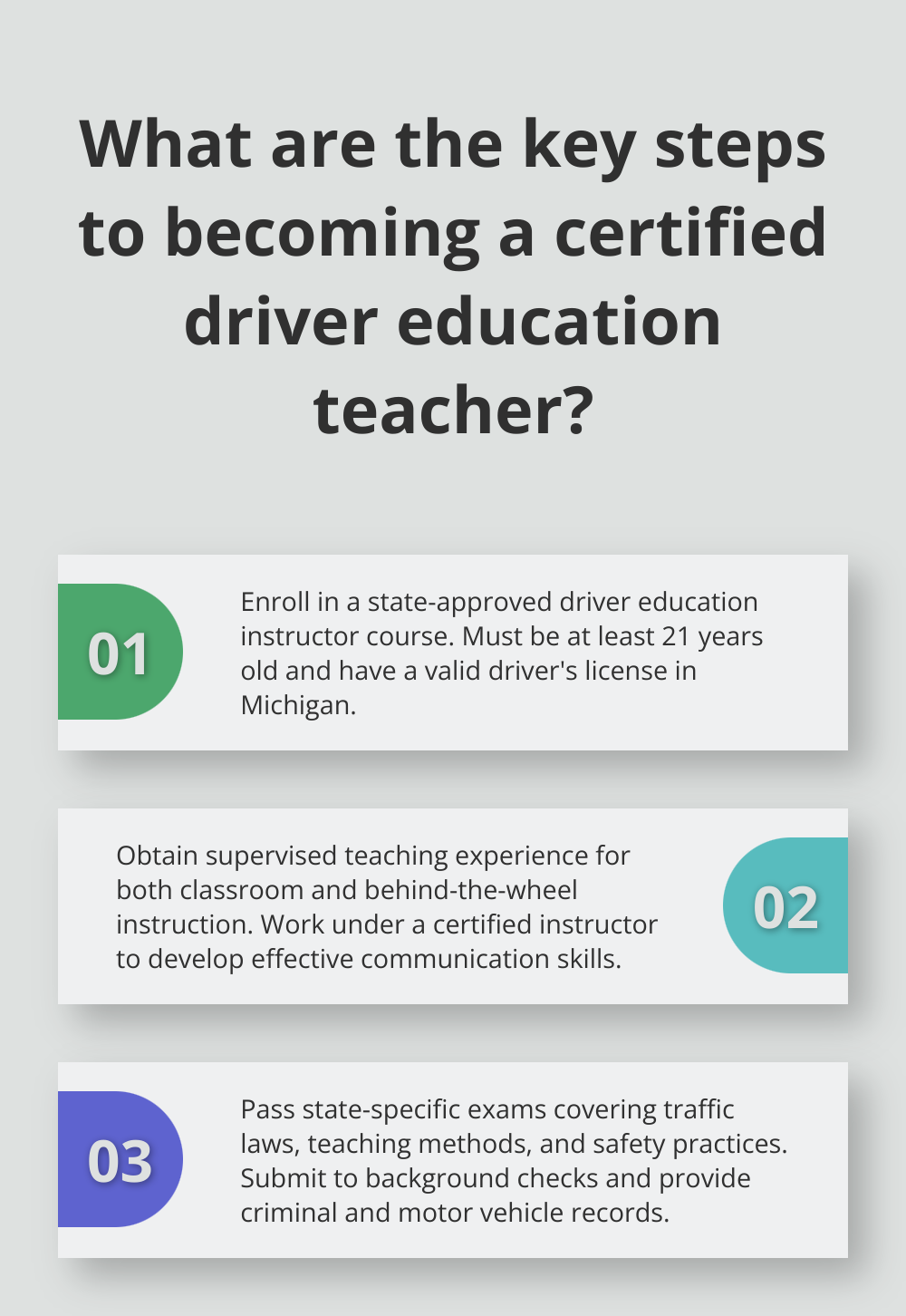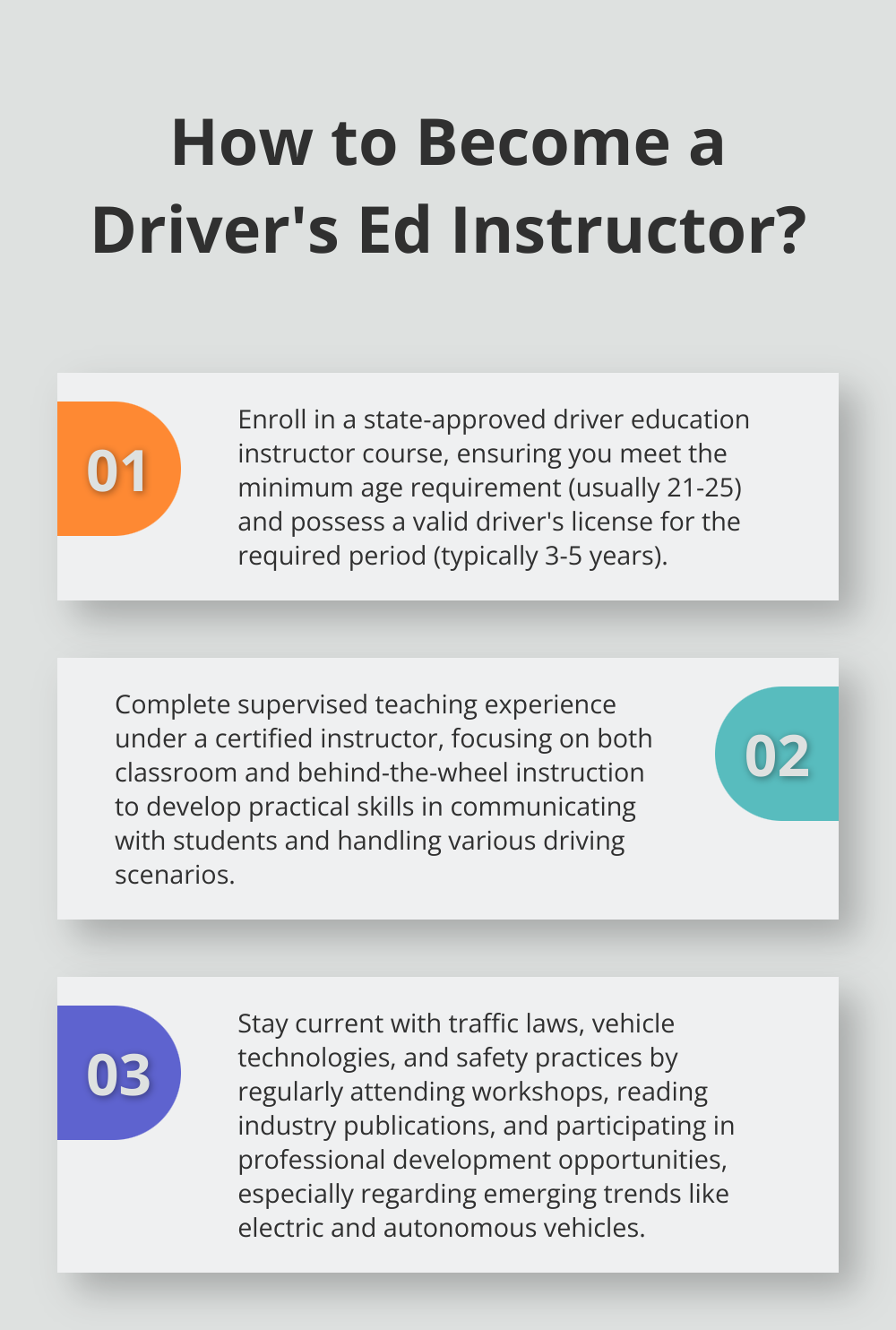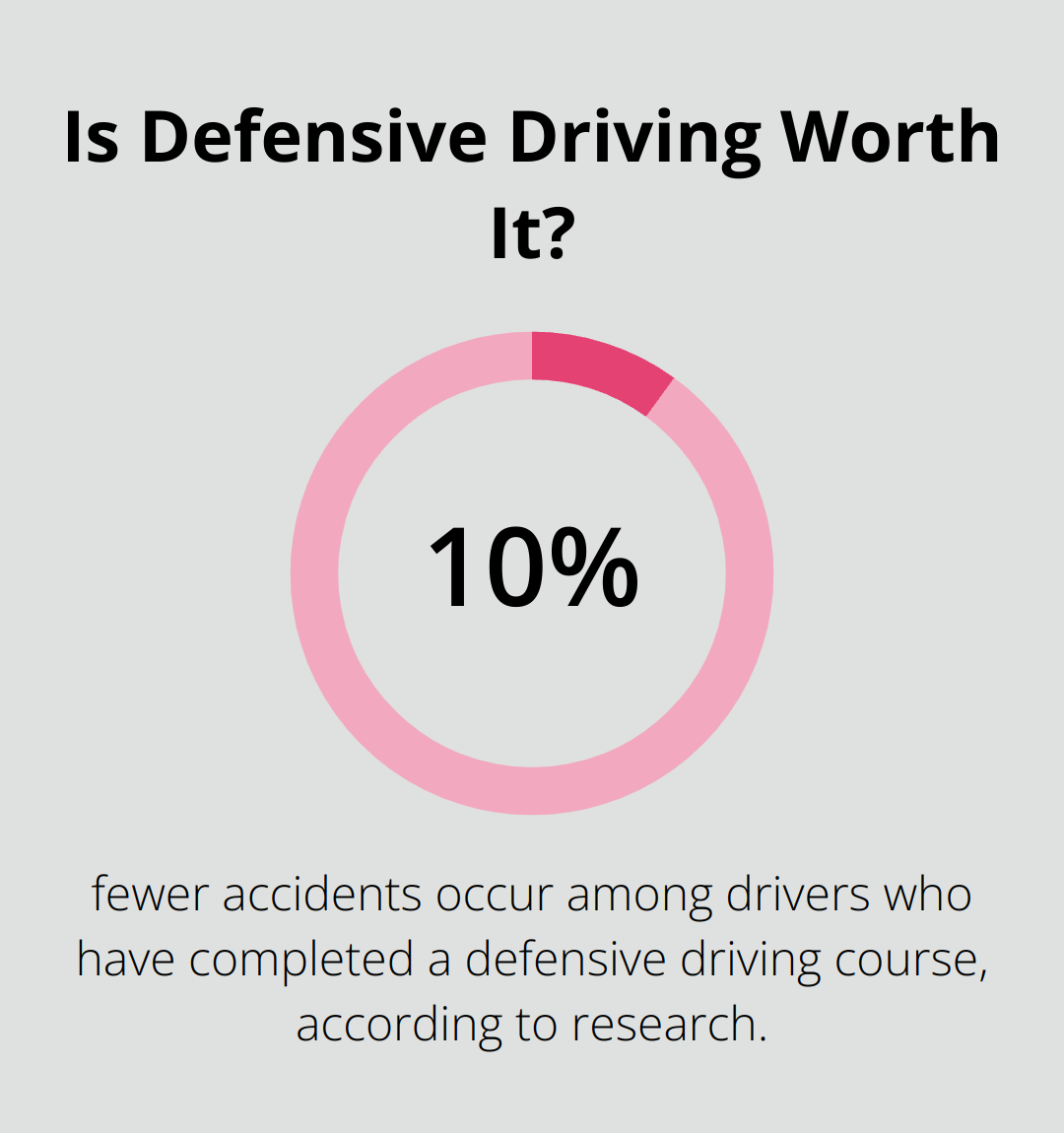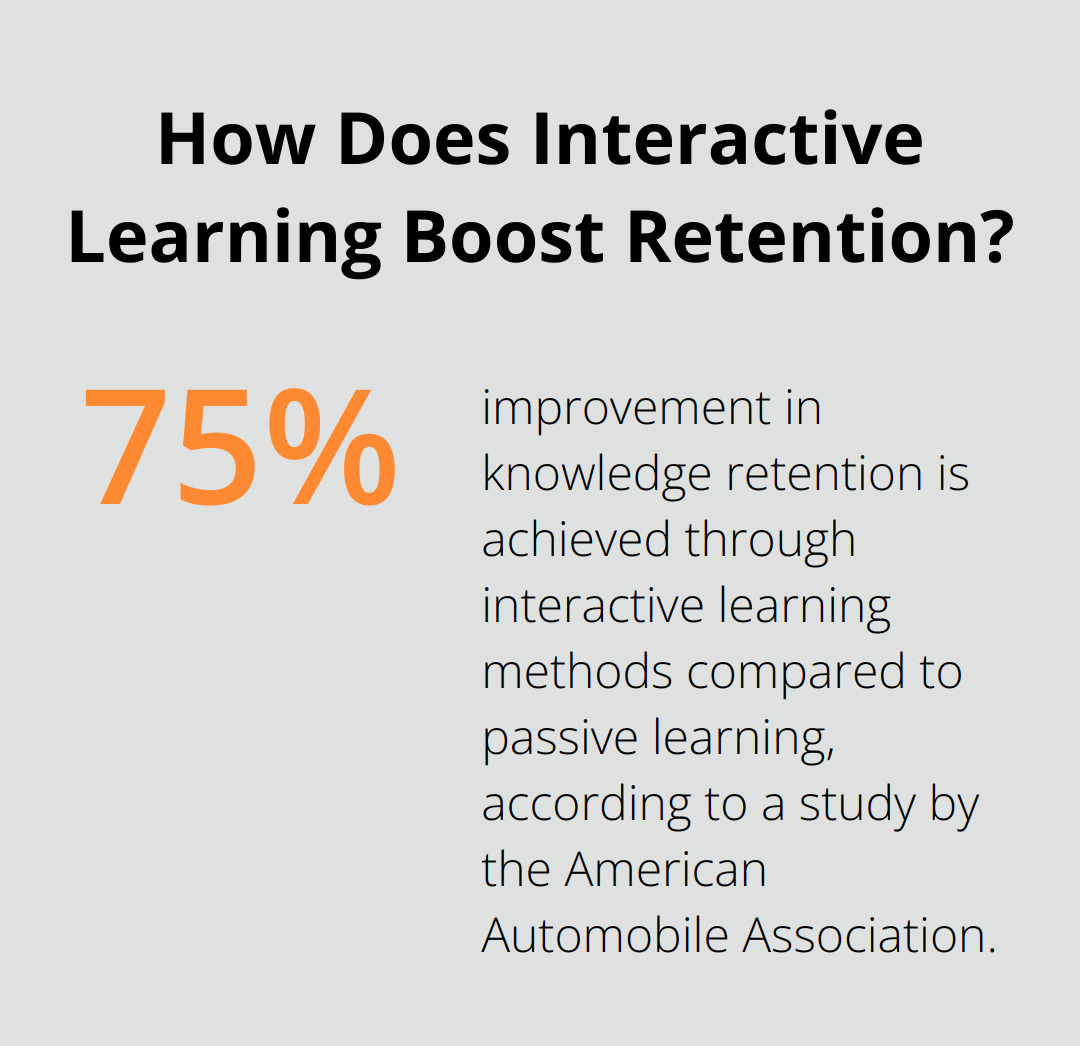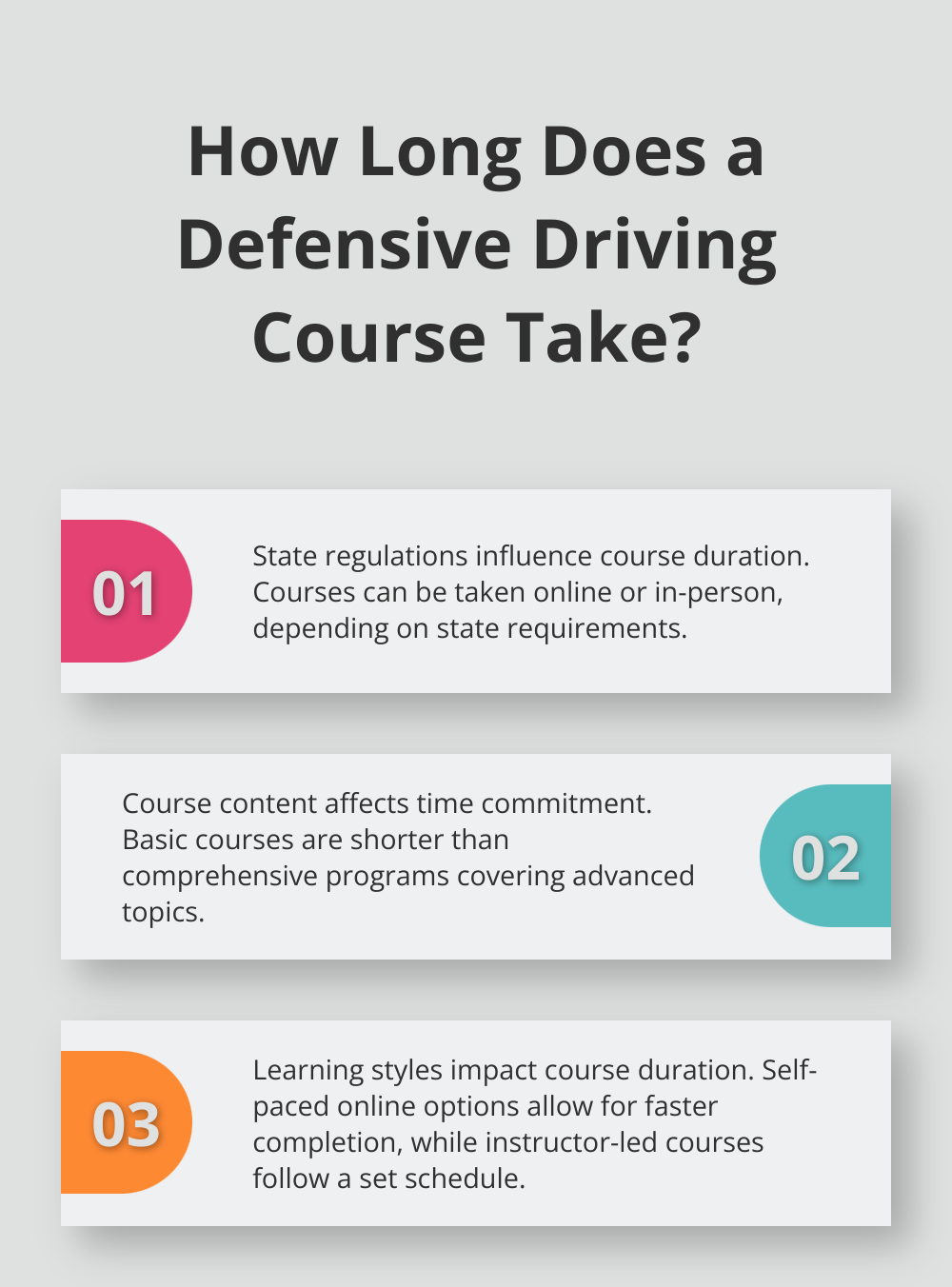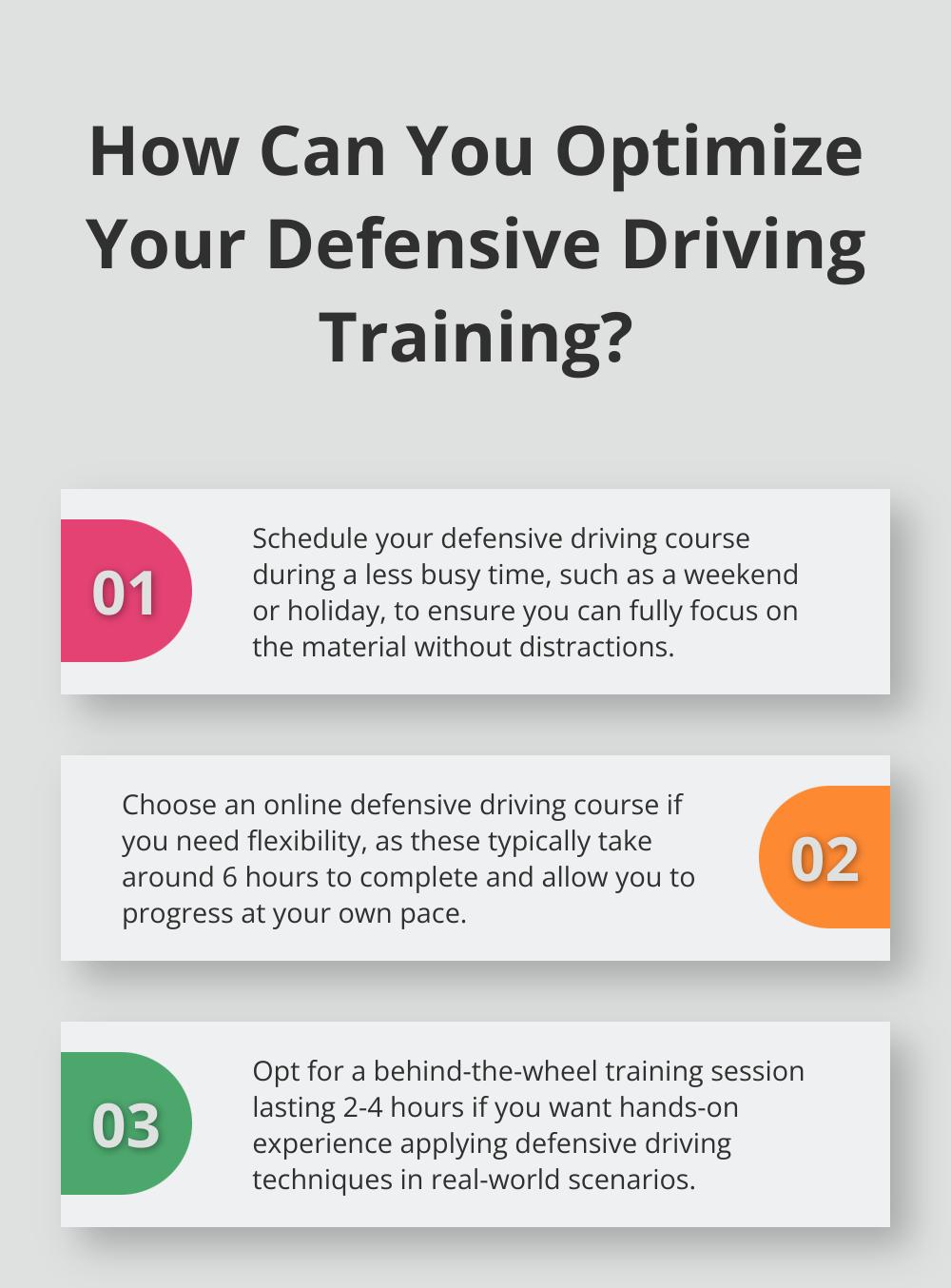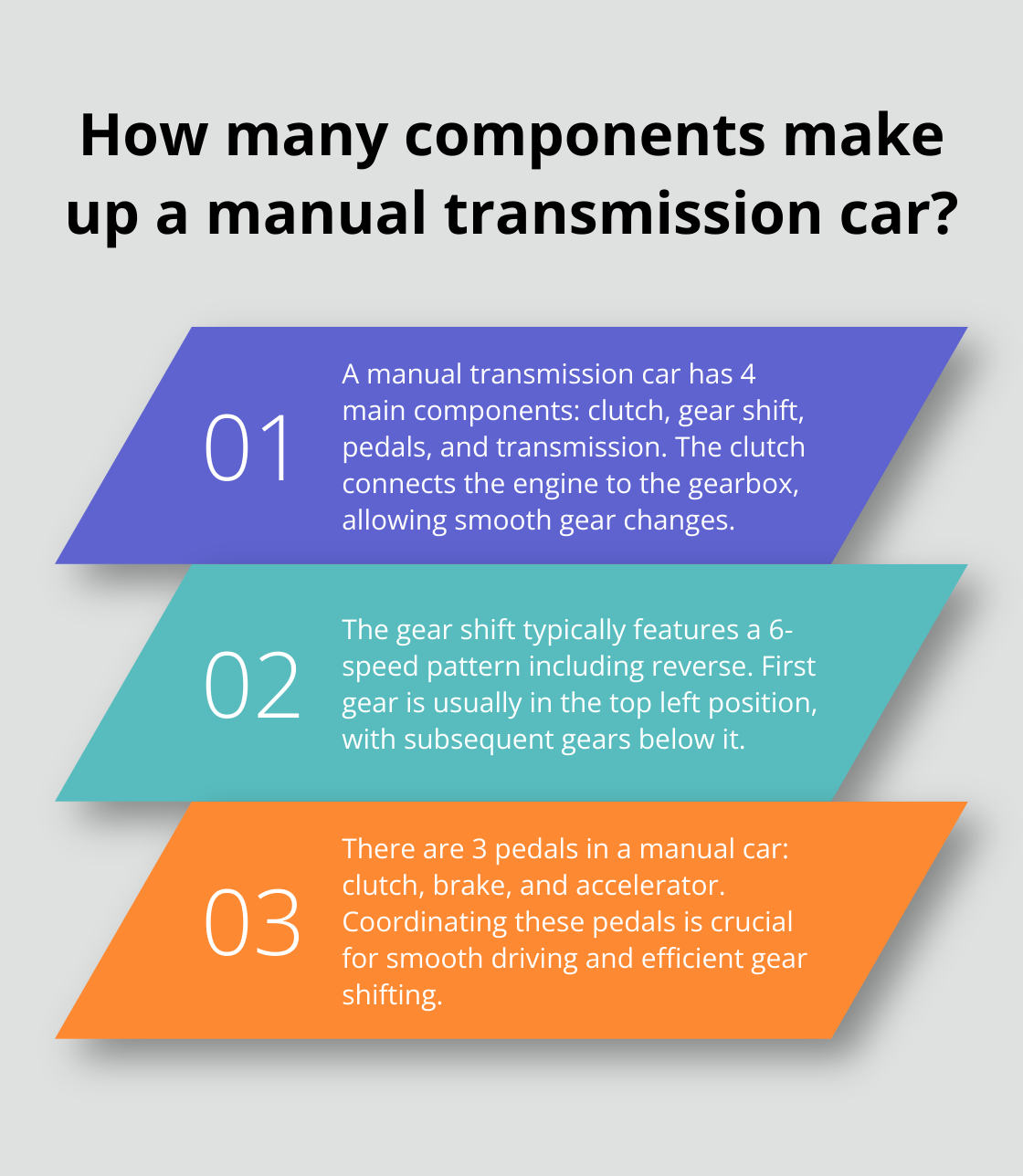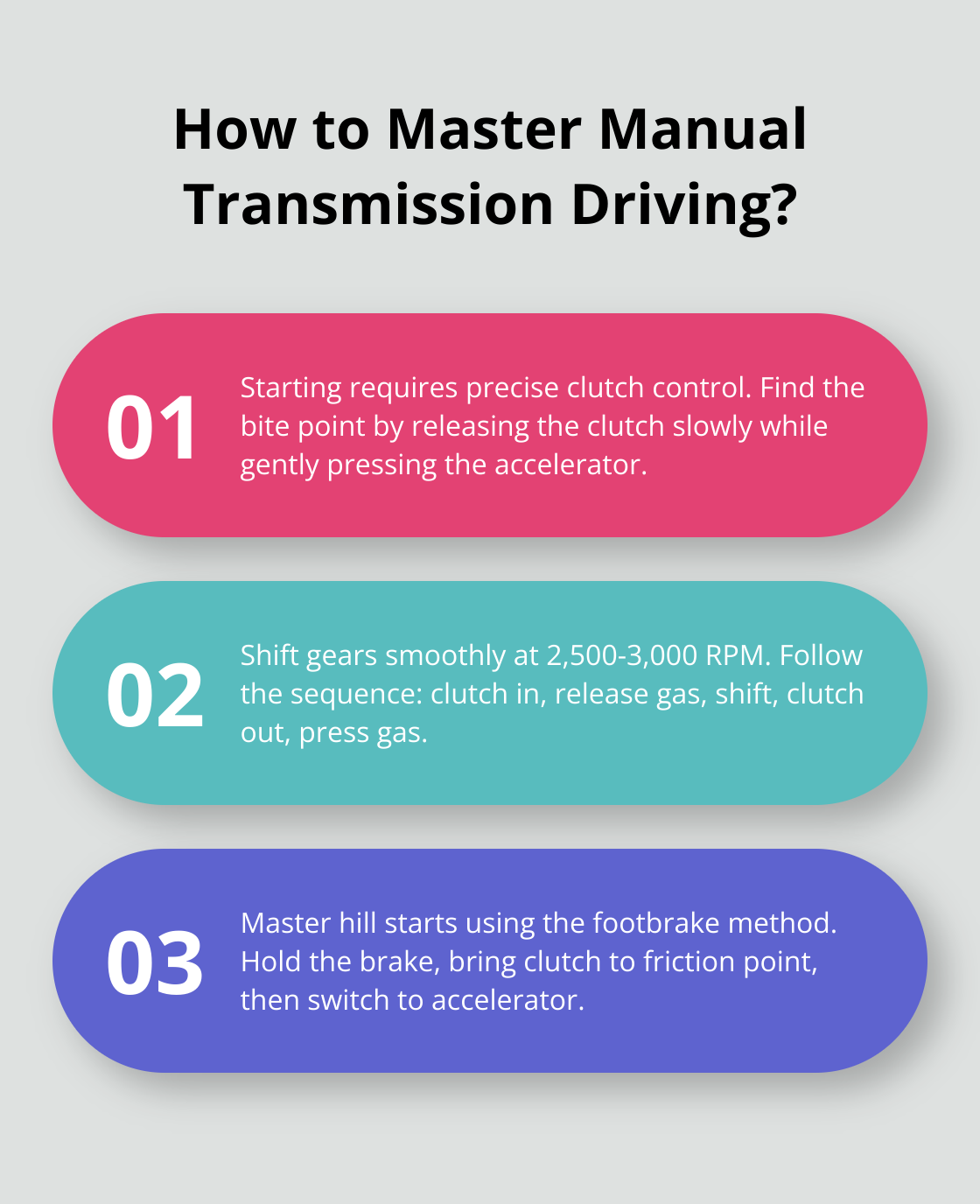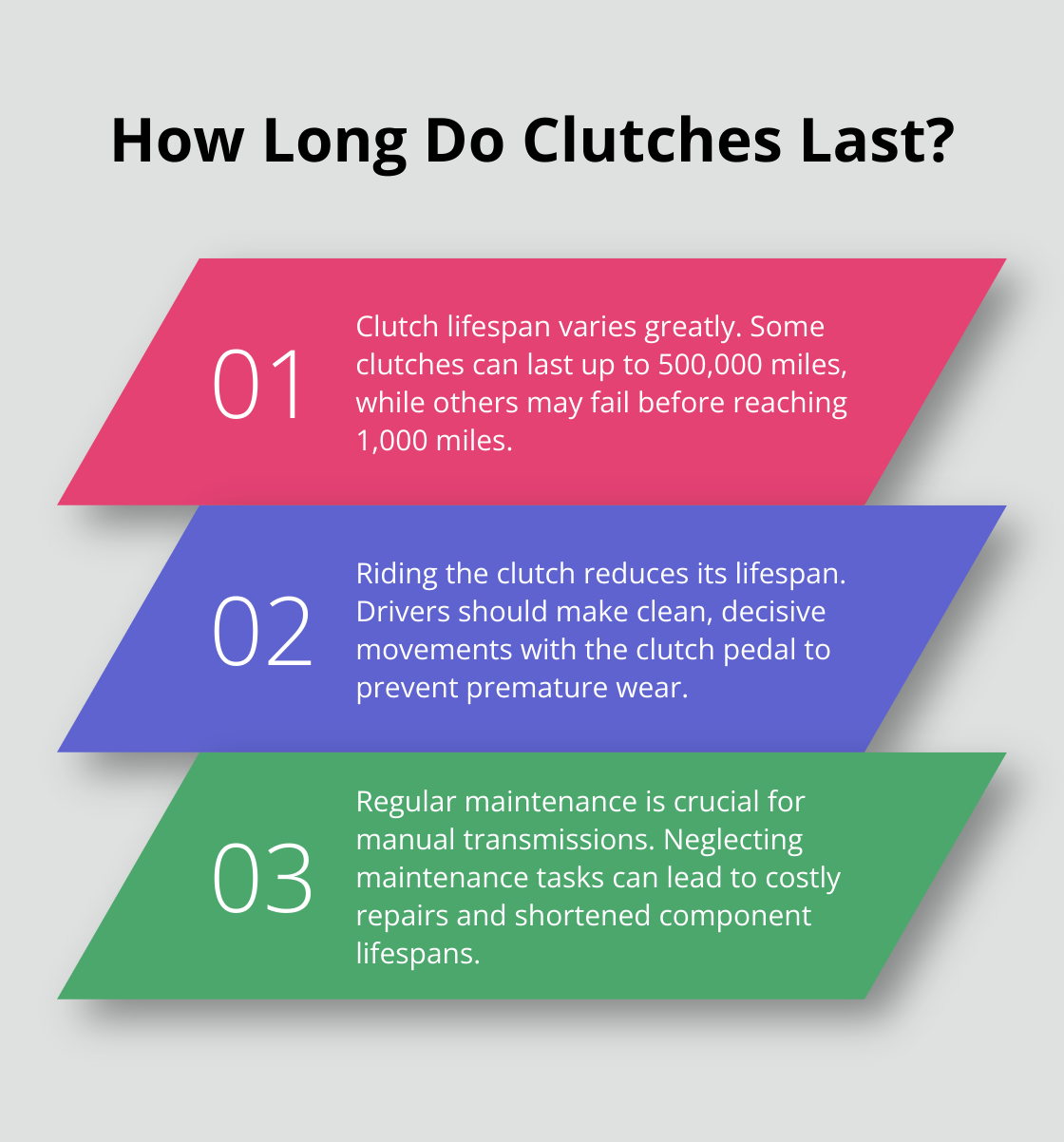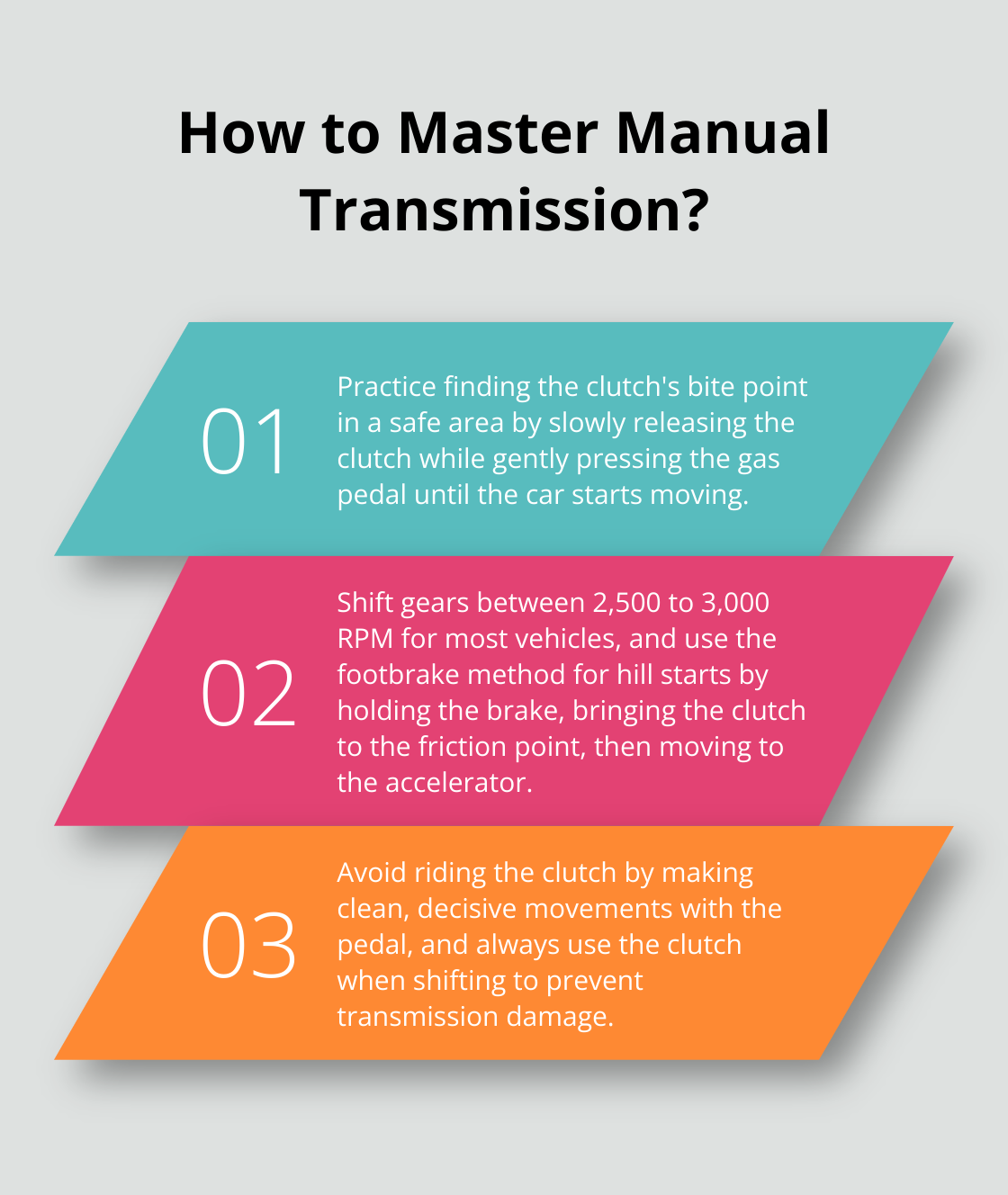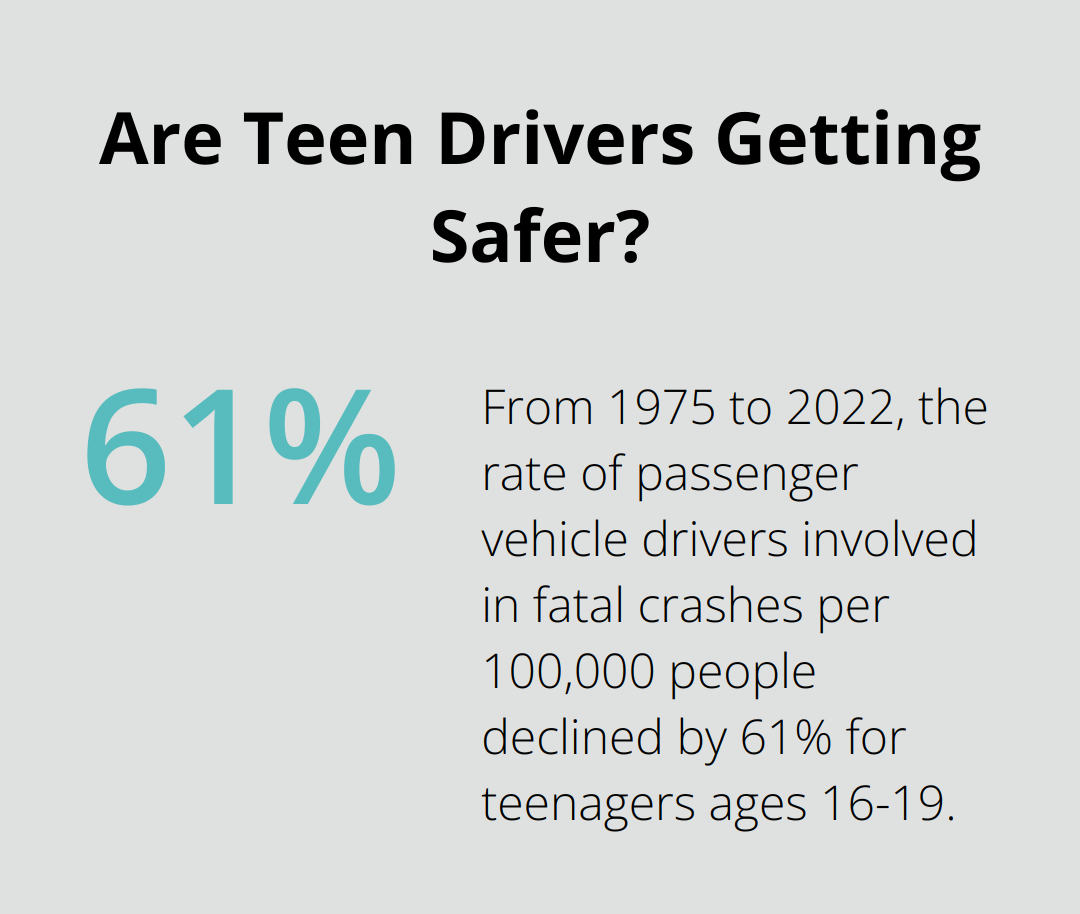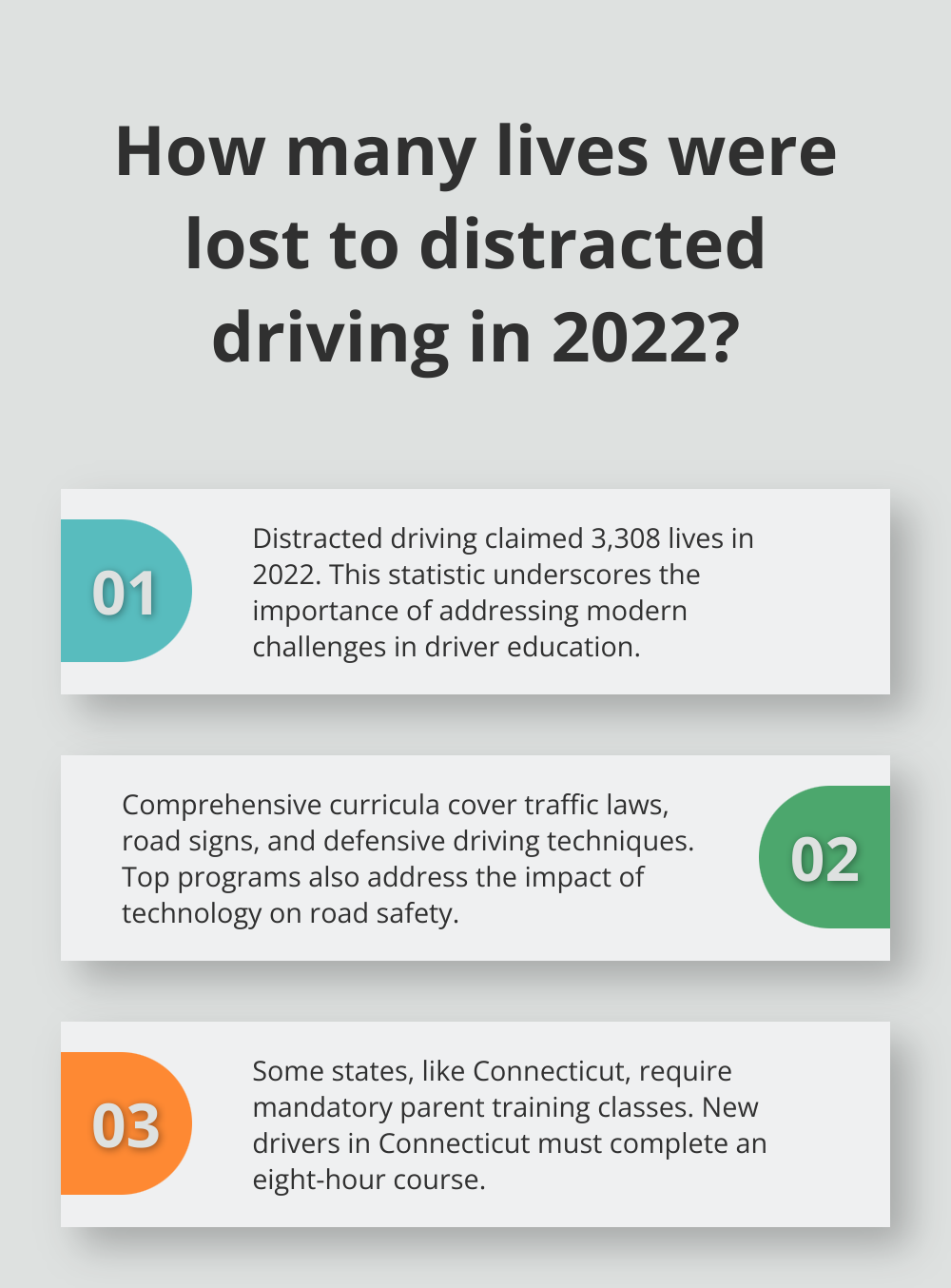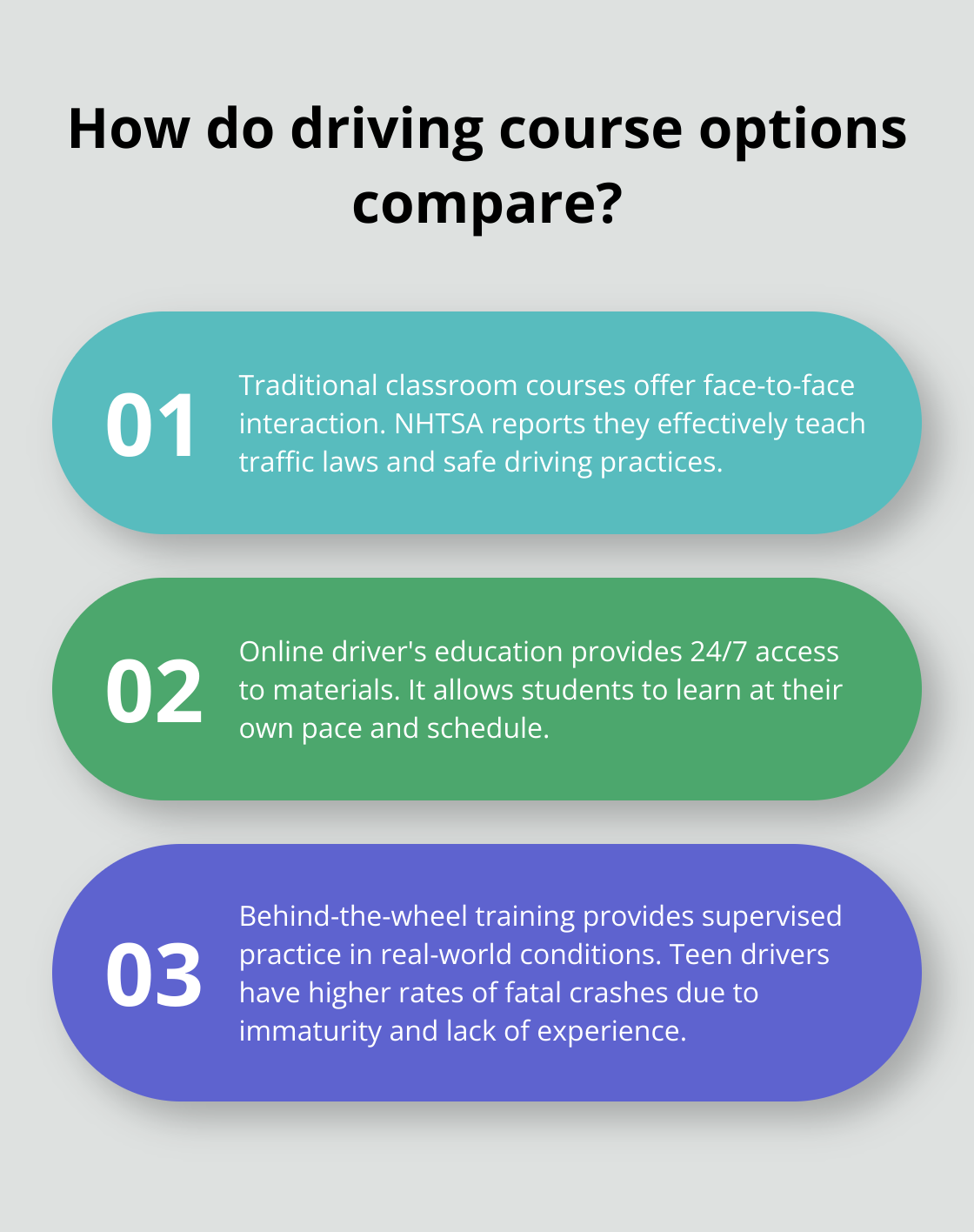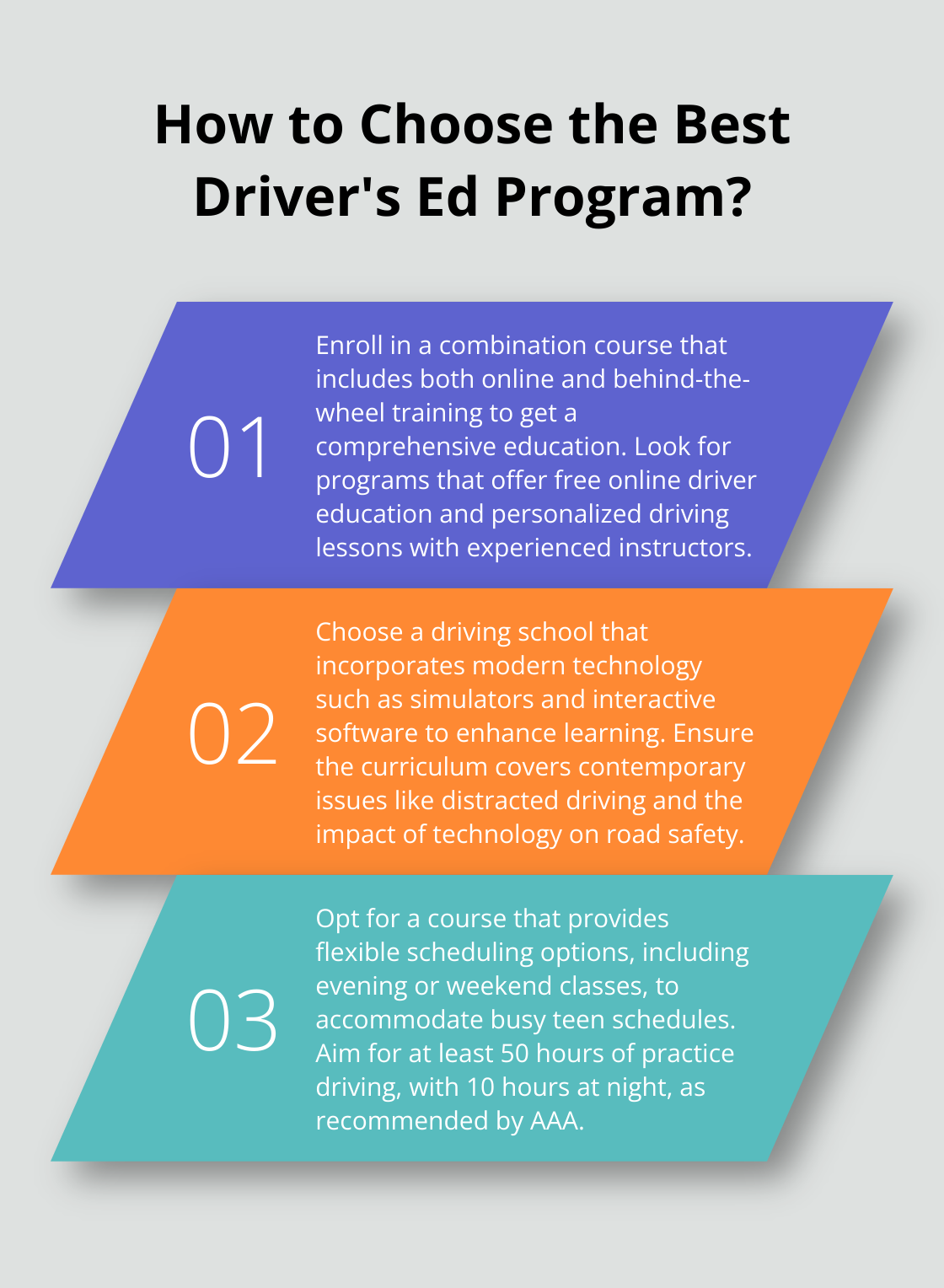How to Take an Adult Driving Course Online
At The Wiser Driver Driving School, we understand that life can be hectic, making it challenging to attend traditional driving classes. That’s why we’re excited to explore the world of adult driving online courses.
These innovative programs offer a flexible and convenient way to enhance your driving skills from the comfort of your home. In this post, we’ll guide you through the process of taking an adult driving course online, helping you become a safer and more confident driver.
Why Online Adult Driving Courses Are Game-Changers
Online adult driving courses have revolutionized driver education. These digital programs transform learning experiences and become increasingly popular among adult learners. Let’s explore the key advantages of these innovative courses.
Learn on Your Own Schedule
The flexibility of online courses stands out as a major benefit. You can study at your convenience – early mornings, late nights, or during your lunch break. This flexibility proves particularly valuable for adults who balance work, family, and other commitments.
Access Up-to-Date Information
Online courses provide the most current driving laws, safety guidelines, and best practices. Unlike printed materials that quickly become outdated, digital content receives regular updates to reflect the latest changes in traffic regulations and vehicle technology.
Save Money on Car Insurance
Many insurance companies offer discounts to drivers who complete approved online driving courses. These discounts can be substantial (often ranging from 5% to 15% off your premium). You improve your driving skills and save money simultaneously – a true win-win situation.
Refresh and Enhance Your Driving Knowledge
Even experienced drivers benefit from online courses. They serve as excellent refreshers, helping you:
- Brush up on rules you might have forgotten
- Learn about new traffic laws
- Maintain safe driving habits throughout your life
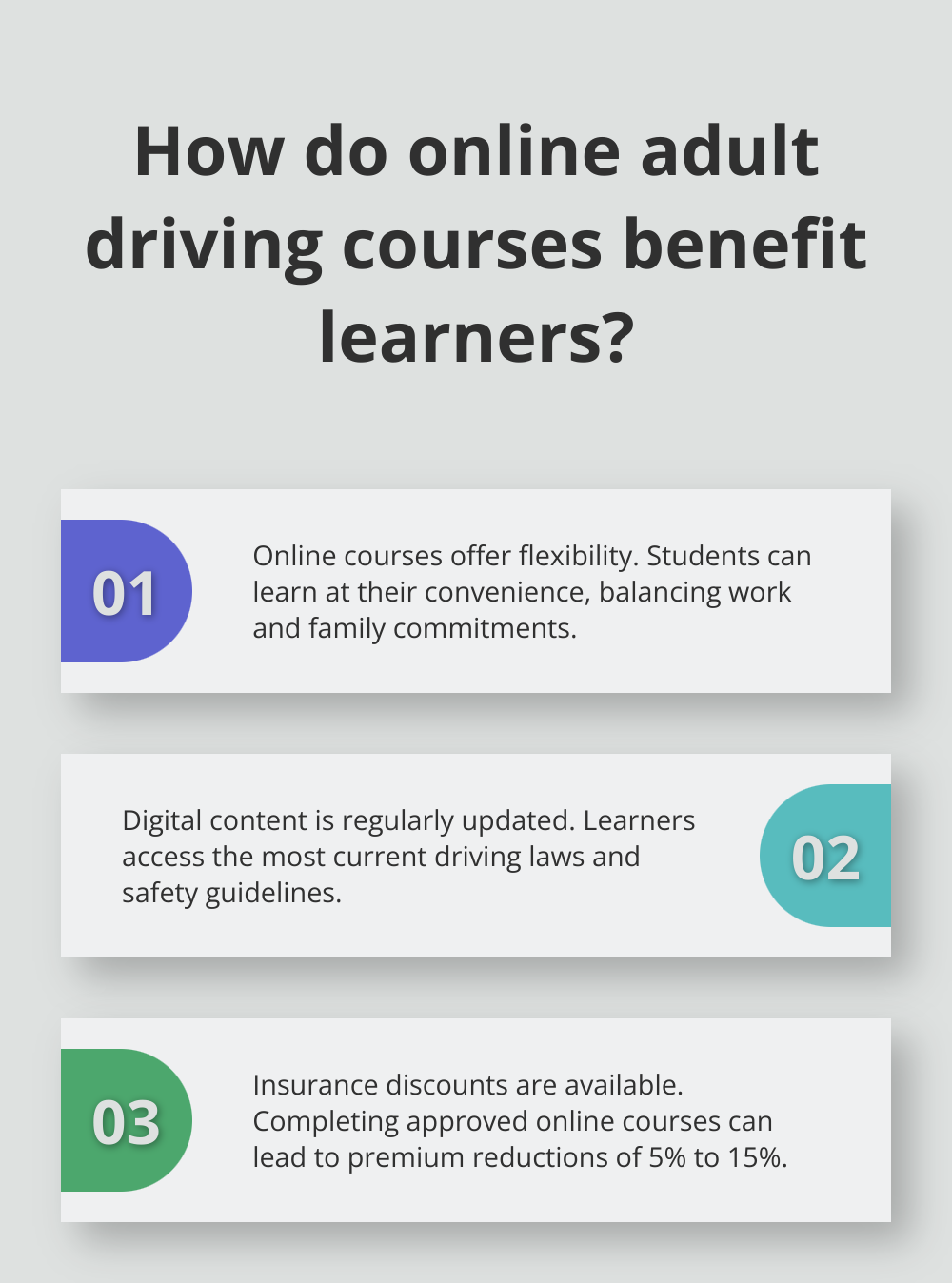
This continuous learning proves essential for long-term road safety.
Interactive Learning Experience
Online courses often incorporate interactive elements that enhance the learning process. These may include:
- Video demonstrations
- Virtual simulations
- Interactive quizzes
- Real-time feedback on your progress
These features make the learning experience more engaging and effective compared to traditional textbook-based methods.
As you consider your options for adult driving education, keep these benefits in mind. The next section will guide you through the process of choosing the right online adult driving course to meet your specific needs and goals.
How to Select the Best Online Adult Driving Course
Choosing the right online adult driving course plays a critical role in your journey to become a safer, more knowledgeable driver. Here’s how you can make an informed decision when selecting your online adult driving course.
Verify State Approval
The first step is to check if the course you’re considering has approval from your state’s Department of Motor Vehicles (DMV) or equivalent agency. State-approved courses guarantee that the content meets official standards and that your completion certificate will receive recognition.
Evaluate Course Content and Duration
Search for courses that offer comprehensive coverage of essential topics such as traffic laws, defensive driving techniques, and handling emergency situations. The duration of the course also matters. While some states mandate a specific number of hours, others allow for self-paced learning.
Assess Interactive Elements
The effectiveness of online learning often depends on engagement. Look for courses that incorporate interactive elements such as:
- Video demonstrations of driving scenarios
- Virtual simulations of road conditions
- Quizzes and assessments throughout the course
These features not only make the learning process more enjoyable but also help reinforce important concepts.
Consider User Experience and Support
A well-designed course should offer user-friendliness and accessibility across different devices. Check if the course provides technical support and instructor assistance. The ability to reach out to qualified instructors can prove invaluable when you need clarification on complex topics.
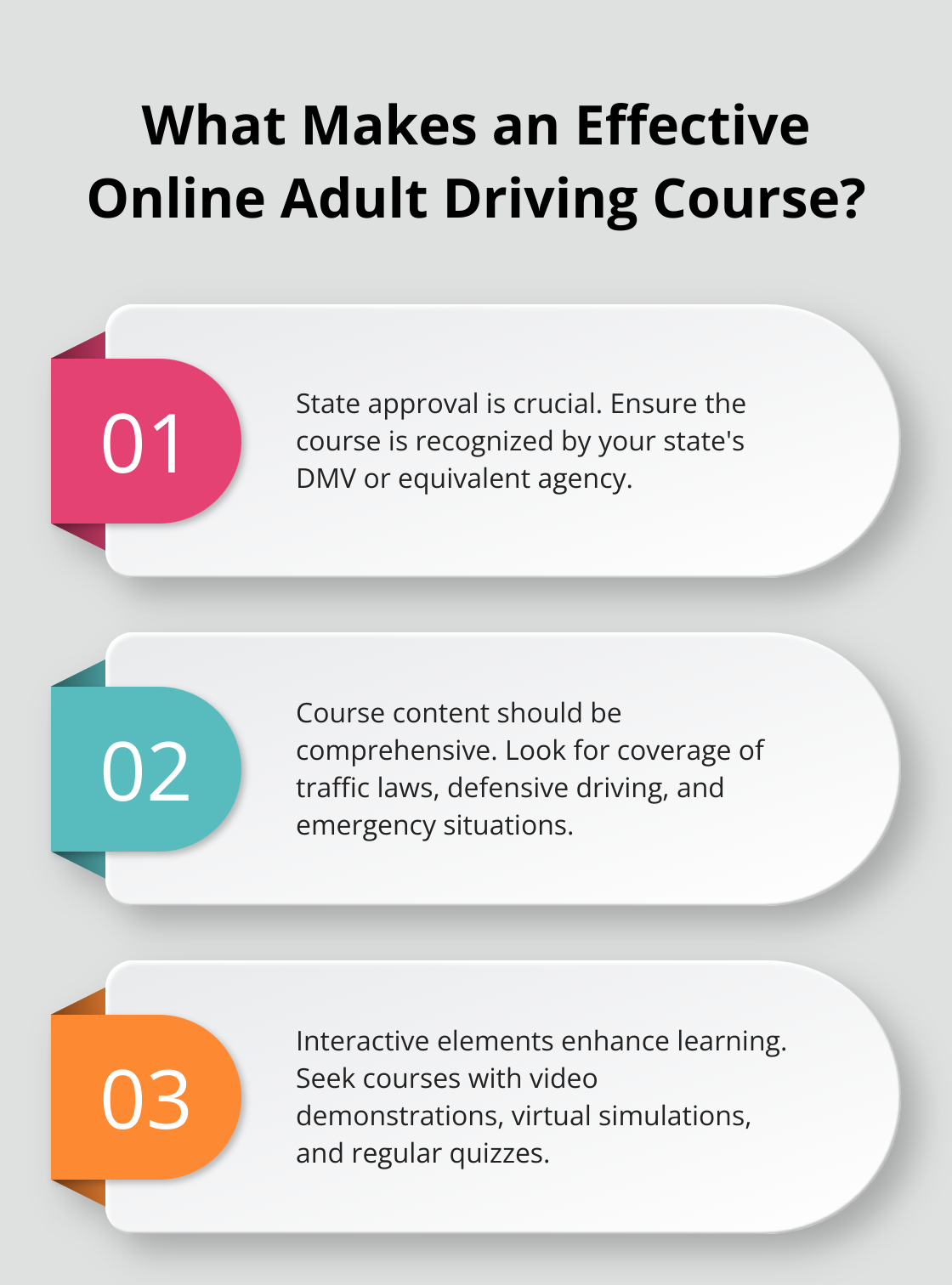
Additionally, search for courses that offer progress tracking and the ability to pause and resume at your convenience. This flexibility holds particular importance for adult learners who juggle multiple responsibilities.
Review Student Feedback
Before you make your final decision, take time to read reviews and testimonials from previous students. These firsthand accounts can provide insights into the course’s strengths and weaknesses. Look for feedback on the clarity of instruction, the relevance of the content, and the overall learning experience.
Now that you know how to select the best online adult driving course, let’s move on to the steps you need to take to successfully complete your chosen course and maximize your learning experience.
Mastering Your Online Adult Driving Course
Create a Realistic Study Plan
Set yourself up for success with a study schedule that fits your lifestyle. Try consistency rather than marathon sessions. Dedicate 30 minutes to an hour each day (often more effective than cramming for several hours once a week). Use a calendar app or planner to block out study times and treat them as important appointments.
Maximize Interactive Learning Tools
Online courses often come packed with interactive features. Use these tools to enhance your learning experience. Watch video demonstrations carefully, paying attention to real-world driving scenarios. Participate in virtual simulations to practice decision-making in various traffic situations. These hands-on experiences can significantly improve your understanding and retention of important driving concepts.
Test Your Knowledge Regularly
Practice quizzes and tests reinforce your learning and identify areas that need more attention. Don’t just pass these assessments; use them as learning opportunities. Review your incorrect answers and revisit the relevant course material. This approach solidifies your understanding and prepares you for the final exam.
Seek Clarification When Needed
Don’t hesitate to ask for help if you encounter challenging concepts. Many online courses provide access to qualified instructors (via email, chat, or scheduled video calls). Take advantage of this resource. Expert clarification can make a significant difference in your learning experience.
Apply Your Learning to Real-World Situations
As you progress through your online course, actively think about how the concepts apply to your daily driving experiences. Observe traffic patterns, road signs, and other drivers’ behaviors during your regular commutes. This practice helps bridge the gap between online learning and real-world application, making you a more aware and skilled driver.
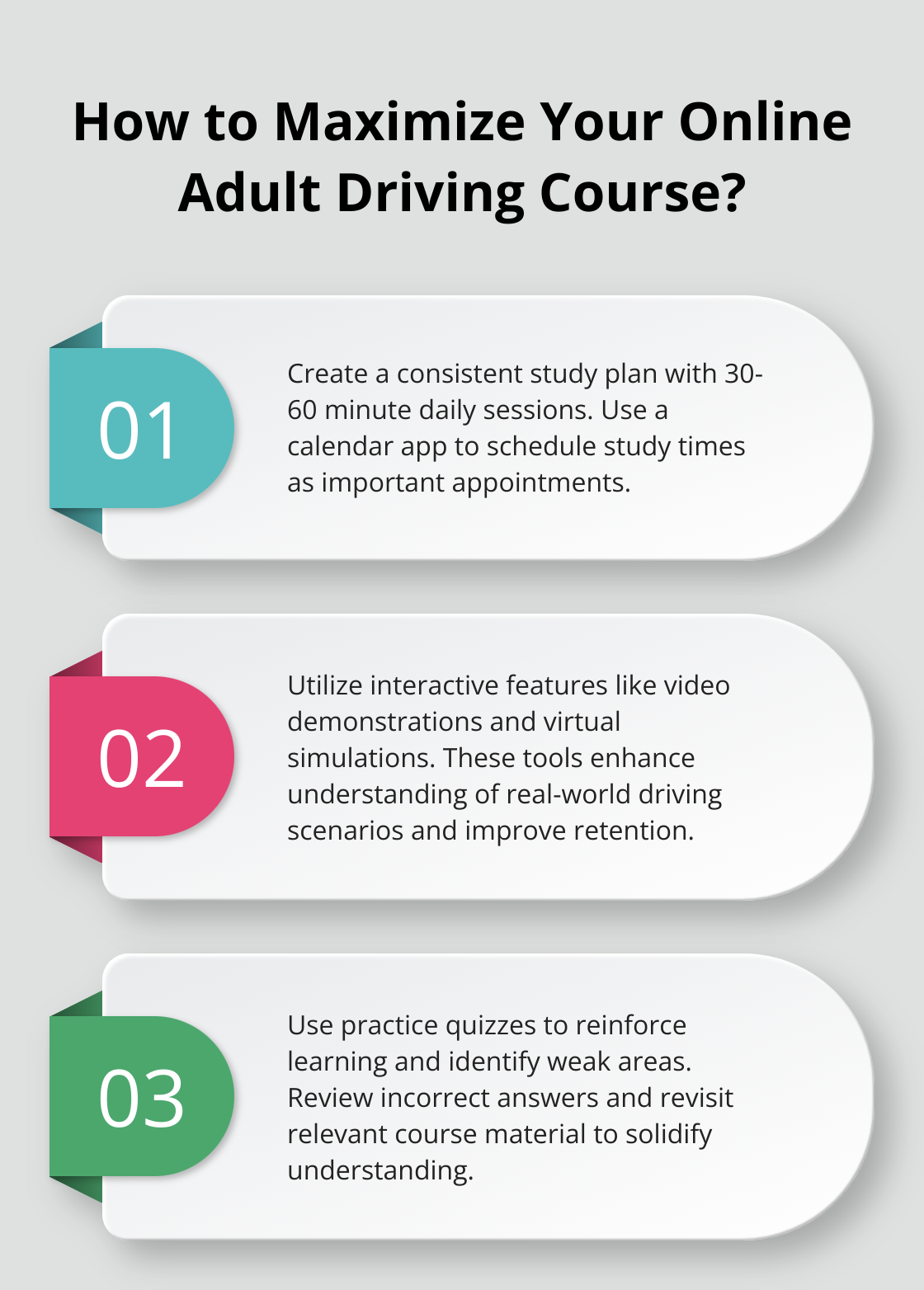
Final Thoughts
Online adult driving courses have transformed driver education, offering flexibility and convenience. These digital programs allow you to learn at your own pace, access current information, and potentially qualify for insurance discounts. The importance of continuous learning in driving cannot be overstated, as roads, traffic laws, and vehicle technologies constantly evolve.
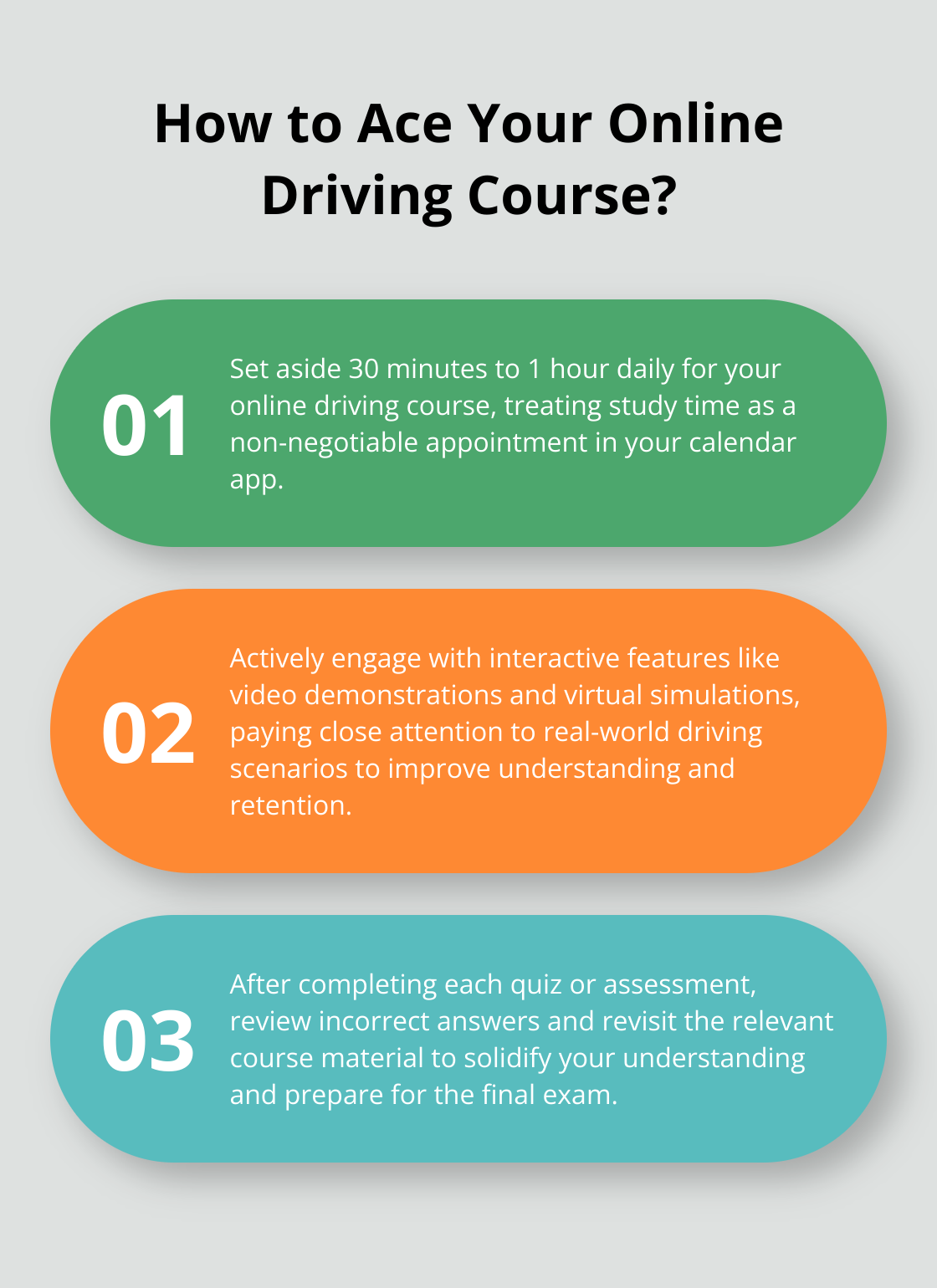
Now is the perfect time to take the next step in your driving journey. Whether you want to refresh your skills, prepare for a license test, or become a more confident driver, an adult driving online course can help you achieve your goals. At The Wiser Driver Driving School, we offer programs designed for drivers of all ages and experience levels.
Don’t wait to become a safer, more knowledgeable driver. Enroll in an adult driving online course today and join the community of drivers committed to lifelong learning and road safety. Your future self (and fellow road users) will thank you for it.





